As I board my flight, I feel excited to visit a new country — my 30th — for the first time since arriving in Thailand seven months ago. Despite being in Southeast Asia for so long, I have yet to venture outside of Thailand, largely because of continued lockdowns that are finally starting to curb. Arriving three days after all pandemic-related restrictions were removed, my trip could not have been timed more perfectly.
What’s So Special About Singapore?
Short answer: everything.
Let me rant to you for a second to set the scene. If you’re already a Singapore aficionado, feel free to skip ahead.
Singapore is a tiny island nation at the crossroads of East and West, both geographically and culturally. This has endowed it with both economic and cultural wealth. The city-state was formerly a British colony, then a part of Malaysia, until it achieved its independence in 1965. Since then, strong one-party-system governments have modernized the country with staggering speed and efficiency. Today, it’s the most developed (and most expensive) nation in Southeast Asia by a large margin, and it’s one of the world’s top five richest countries when measured by GDP per capita. In many ways, it’s more similar to the U.S. and Europe than its Southeast Asian neighbors.
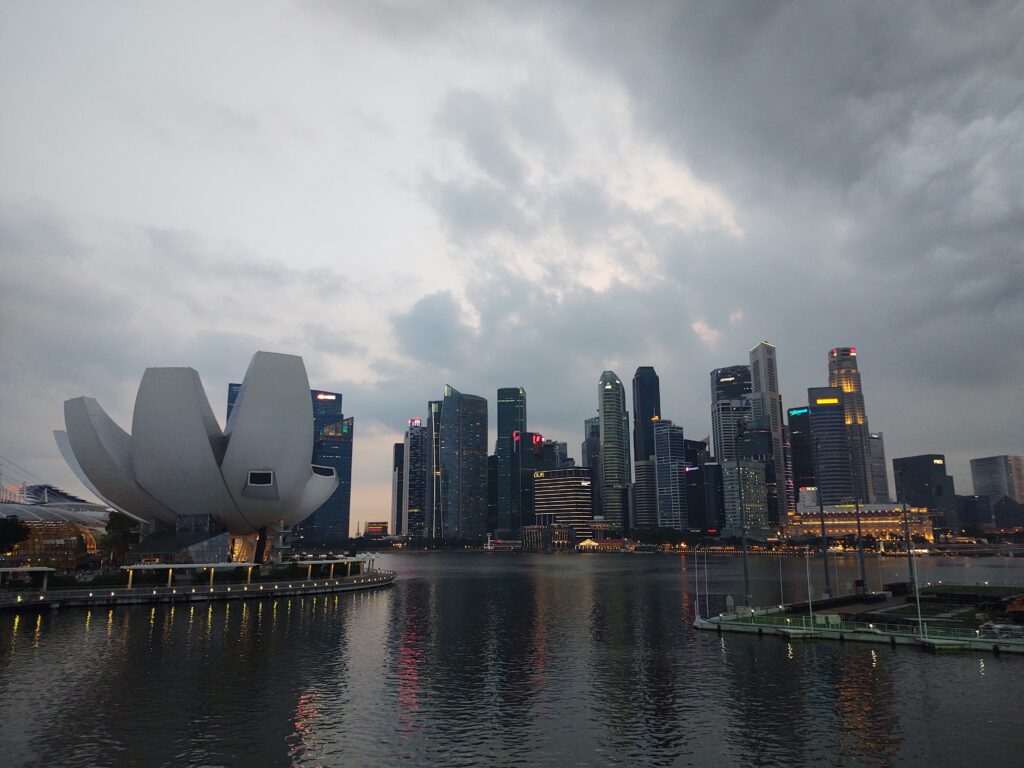
With this heritage, Singapore is a classic melting pot; an immigrant-fusion state with a collage of different ethnic groups, primarily Chinese, Malay, and South Indian. These days, it has also become one of the most desired hubs for expats from the U.S., Europe, and Hong Kong. There are four official languages — English, Mandarin Chinese, Malay, and Tamil — with many signs patiently translating notices and directions into all four. Even more religions live in harmony together. Cuisines from all over the world are featured and celebrated, from tasty Malay laksa to Indian dosas and from Hainanese chicken rice to Cantonese dim sum. And yeah, you can surely get an epic bowl of pasta if that’s what you’re in the mood for, lah.
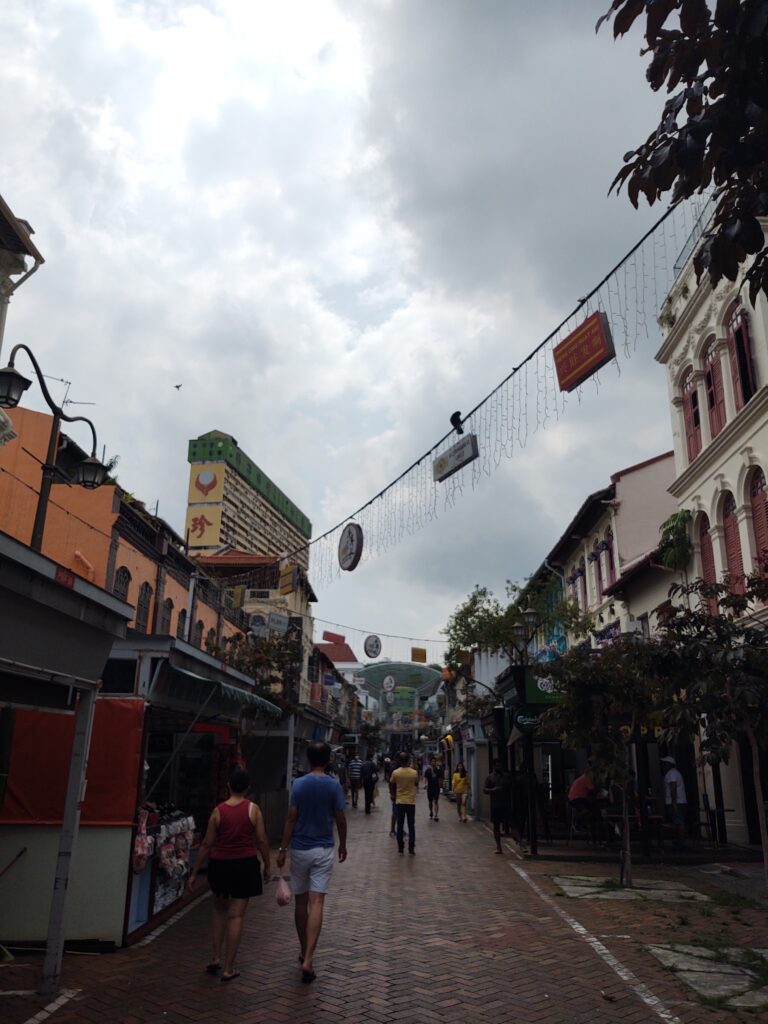
A Modern Face Of Asia
My first impression of Singapore is that everything here is high quality. Everywhere I eat is delicious and unique. Everywhere I visit is developed to the point of wholeness, where nothing is left to be desired in well-designed experiences (I’ll give some examples of places I visited in a moment). Even the city’s endless expanses of public housing blocks in its more residential areas, which have earned a bit of international infamy due to their repetitive, monotonous nature, can be spacious and comfortable on the inside.
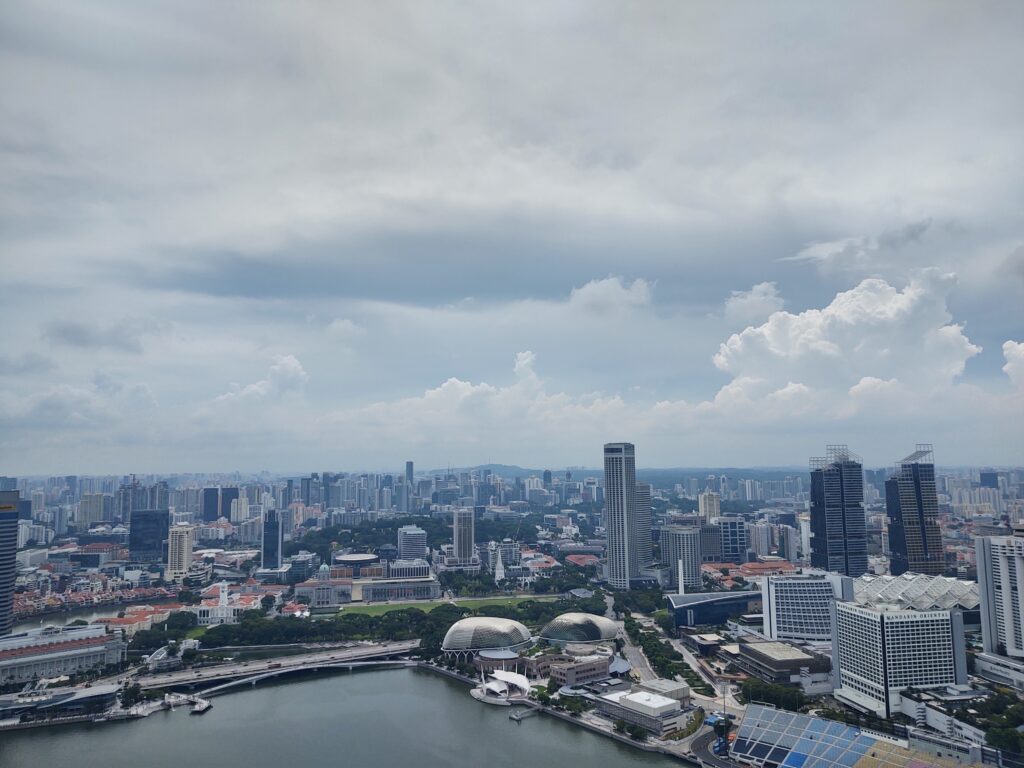
I stayed in one of these with a local host and friend. “Some people say we’re materialistic, but I don’t think so. I think people in Singapore just have high standards,” she explained to me. I’m not sure I fully understand the difference, but it makes sense considering the entire country is the size of New York’s five boroughs and, as another friend explained, a restaurant with anything but excellent food is doomed to close.
If you’ve heard of Singapore, it’s probably because of the country’s reputation as being ultra-clean and ultra-strict. It’s one of the few countries where caning is still used as a punishment, and drug smuggling is punishable by death. Singapore even has a ban on chewing gum. These can leave a bad taste for foreigners in more ways than one, but it all combines to create one of the most refined, orderly countries on the planet.
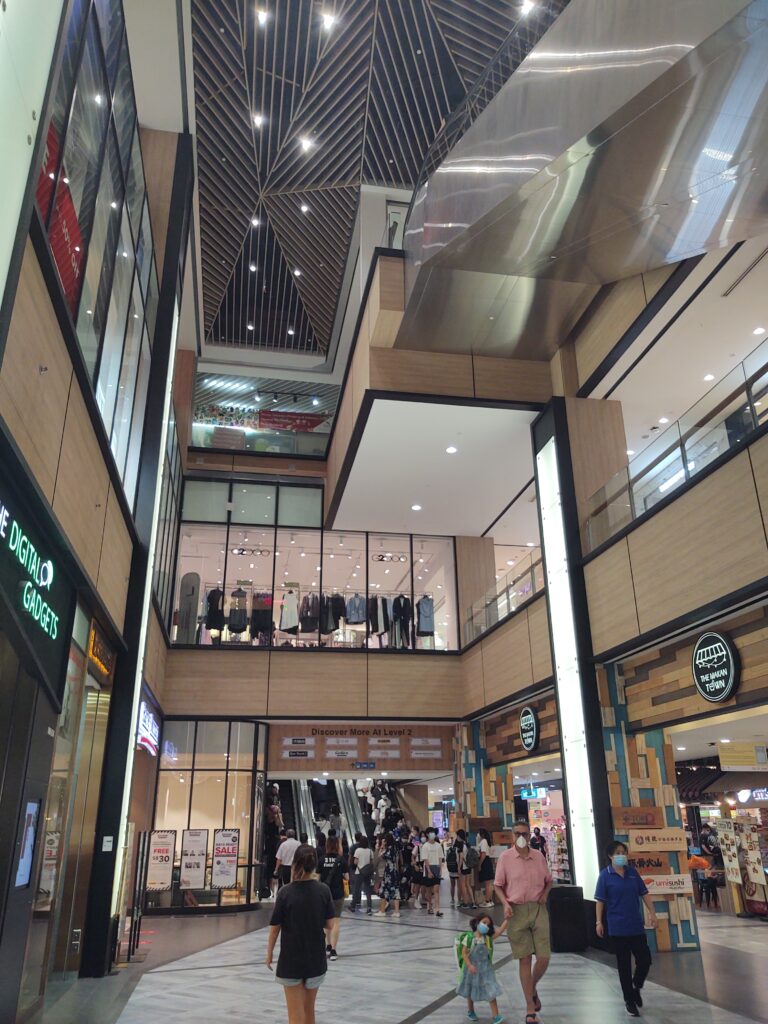
Can I Visit Singapore On A Budget?
If you only visit for two or three days — which is all you need — a trip to Singapore doesn’t need to break your wallet. In Singapore, I’d say that $50/day is the bare minimum budget (unless you follow my tip below!). Obviously, your experience will be different if you allocate $60 a day vs. $600.
Like any place, how much you spend is ultimately up to you, and there are some things you can do to keep it cheaper. For example, cheap food is abundant at food courts and hawker centers, most attractions are either free or cheap, and the efficient public transportation system will only run you between $0.50 and $2 per trip. Accommodations, on the other hand, are very expensive here.
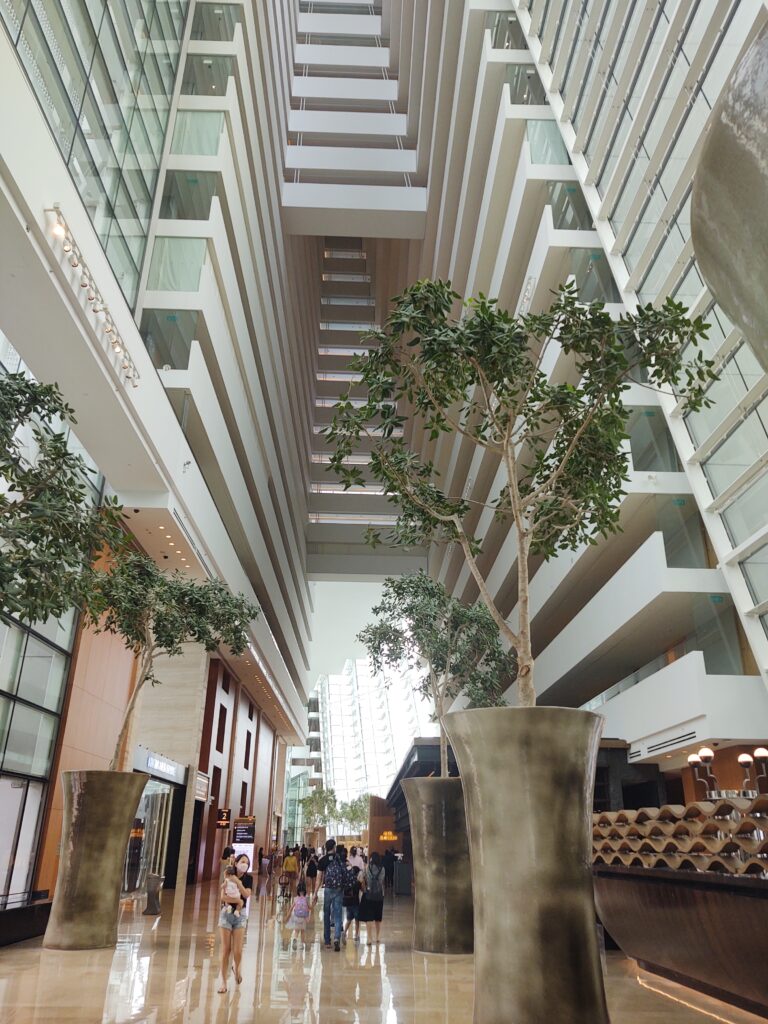
Budget Travel Tip: Couchsurfing In Singapore
As a tip for the open-minded, I recommend a website and app called Couchsurfing, where strangers from all over the world offer friendship and extra rooms and couches in their homes in exchange for your simple, enthusiastic, curious presence. Inspired by the backpacker lifestyle, it’s one of the best ways to keep your trip low-budget, plus it’s an excellent way to meet people along the journey. Couchsurfing gives you great access to a travel resource that’s as valuable as gold: local knowledge.
Couchsurfing was practically made for Singapore, where hotels would otherwise be guaranteed to be your largest expense and where everyone speaks perfect English. Not to mention, most Singaporeans are incredibly proud of their country and genuinely love to share it with newcomers. With this in mind, I joined the platform (note that there is an annual membership fee around $10) and tried it for the first time.
Mi Casa Es Su Casa
I’ve always loved staying with friends whenever I’d pass through their towns, so the idea wasn’t entirely new to me, but this was the first time I stayed in a stranger’s house. My host was experienced and welcoming, having hosted over 100 travelers in the guest room which she amazingly offered to me for my entire 4-night stay. She also took me to some of her favorite restaurants to sample local dishes — all fantastic — and generously paid for all but our last meal, when I insisted on returning the favor. We had a great time together and it was wonderful to meet and chat with a native Singaporean.
The only downside — and potentially a major one — is that my host lived about as far away from downtown as would be possible while still remaining in the country. I’d spend an hour on the subway ride into town and another hour on the way back. With more effort and research, I could have surely found a host closer to the major sites, but as a new user on the platform with no reviews or references, I accepted the first offer I received.
Couchsurfing Friends
Couchsurfing is also great for meeting up with people, even without staying in their homes. I met KC, who was another incredibly welcoming, generous, and experienced host who has been showing people around Singapore for years. He works as a family lawyer, but introducing people to the country is one of his biggest passions.
KC had some family staying with him and didn’t have room at his place for me, but we still spent two full days driving around to the major sites. I’m certain he’s been to these hundreds of times, but he doesn’t mind going again and again with new people. He, too, paid for all my food — including some super fancy, unbelievably delicious fine dining — showing a huge amount of generosity. I eventually got him back by sneakily buying his ticket online for the Night Safari.
I could have spent a lot more in Singapore than I did, but the local cultural custom is to show around the guest, take care of them, and let them enjoy without worrying so much about the money. I got treated for most of my stay, keeping everything on a very low budget. I am incredibly grateful to both my hosts, and I hope they visit me someday so that I can return the favor.
How Many Days Do I Need In Singapore?
The small size of the island and its first-class public transportation system makes Singapore easily accessible for visiting. Most travelers seem to agree that three or four days is enough to enjoy all the major sites. I’ll describe these more in a moment.
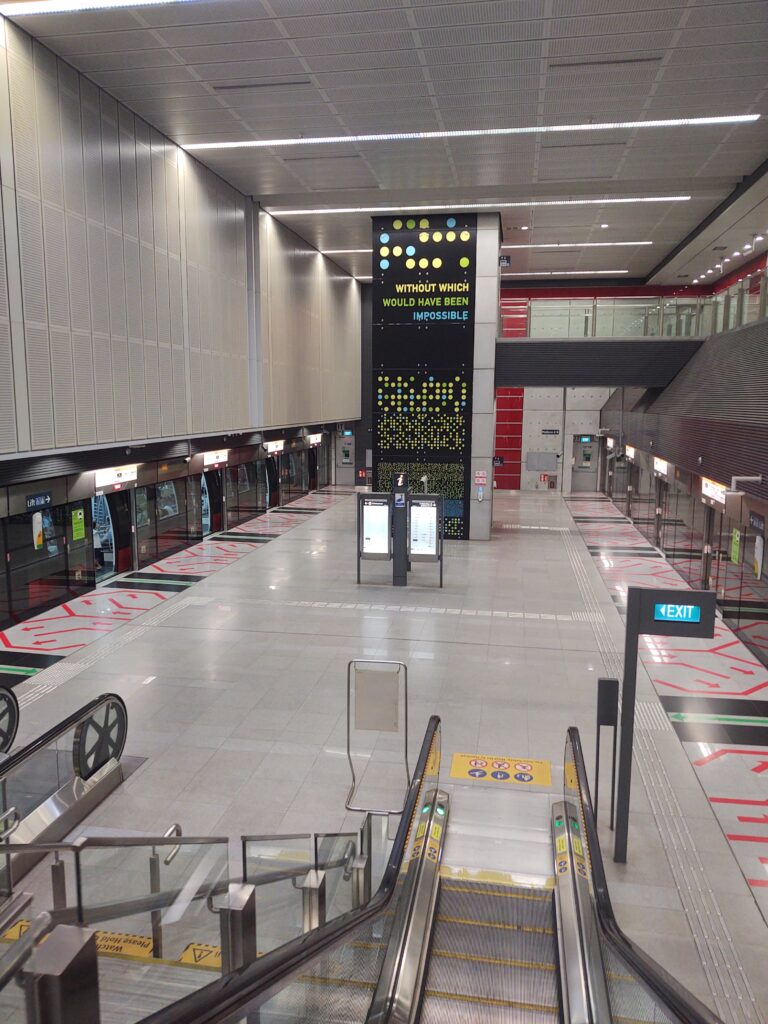
I allotted a little extra time for my trip — five days — in part because Singapore is on my radar as a place to consider living. The government has made a big push to attract foreign professionals to help further the country’s growth, with an abundance of high-paying local jobs and generous visa laws. I wanted to take my time and connect with local culture to see if it felt like a good fit.
Singapore is, without a doubt, a fantastic place to live. Besides the top-quality everything, it’s one of the safest countries in the world. It also has a fantastic education system that fosters, as I read on the façade of a school as I drove by, “worthiness, resilience, and selflessness.” I like that the people here seem ambitious — this sentiment can sometimes be lacking in expat communities in inexpensive countries like Thailand. Singapore seems like one of the best places in the world to settle down and raise a strong and industrious family against a multicultural backdrop.
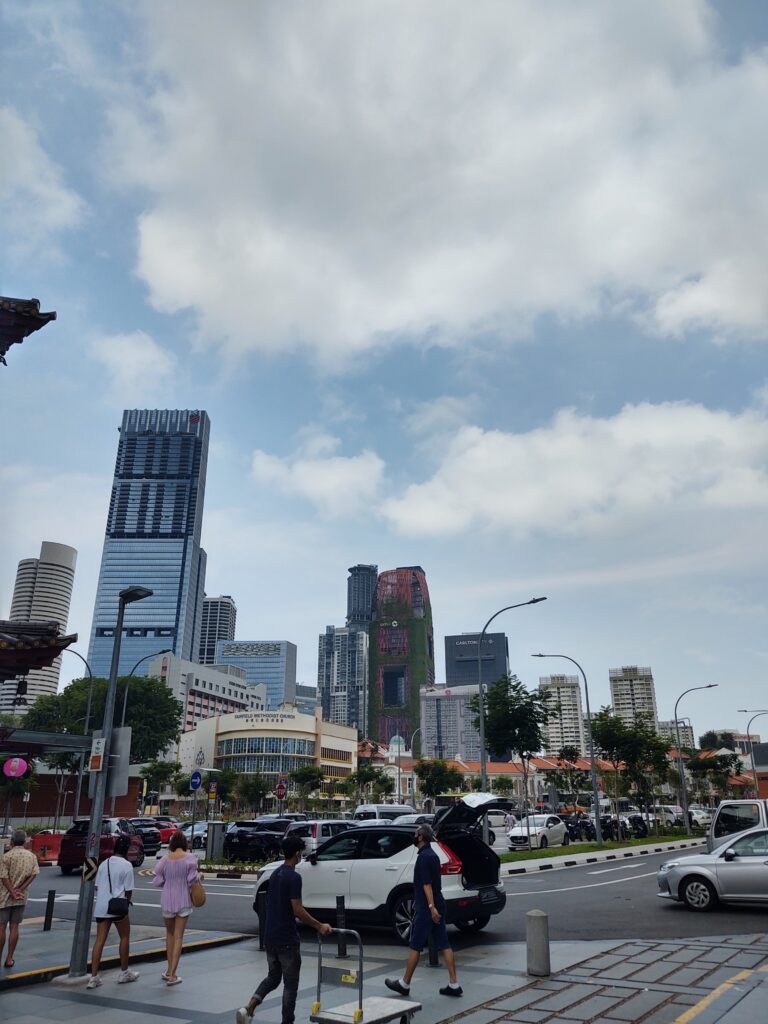
That said, I’m not sure I would want to live in Singapore at this stage of my life, seeing as I’m not starting a family anytime soon and my freelance copywriting career comes with comparable pay to local jobs, not to mention a much greater degree of flexibility. Perhaps someday I’ll stay for longer, but for now, I’m just visiting. Nonetheless, I thoroughly enjoyed the place.
What To Do In Singapore
You really can’t go wrong with a visit to Singapore — everything is enjoyable and well put-together. That said, I’ll mention some attractions I visited that stand out as being particularly world-class.
Gardens By The Bay
The city-state’s government is very involved and active in urban planning, and it has sought to transform the country into a “city in a garden” with an abundance of green space. There are trees everywhere along the sides of roads and gardens in the center courtyards of housing blocks. Even large buildings contain vast amounts of foliage on rooftops and verandas. Especially notable, though, are the famous Gardens by the Bay, which opened in 2012.
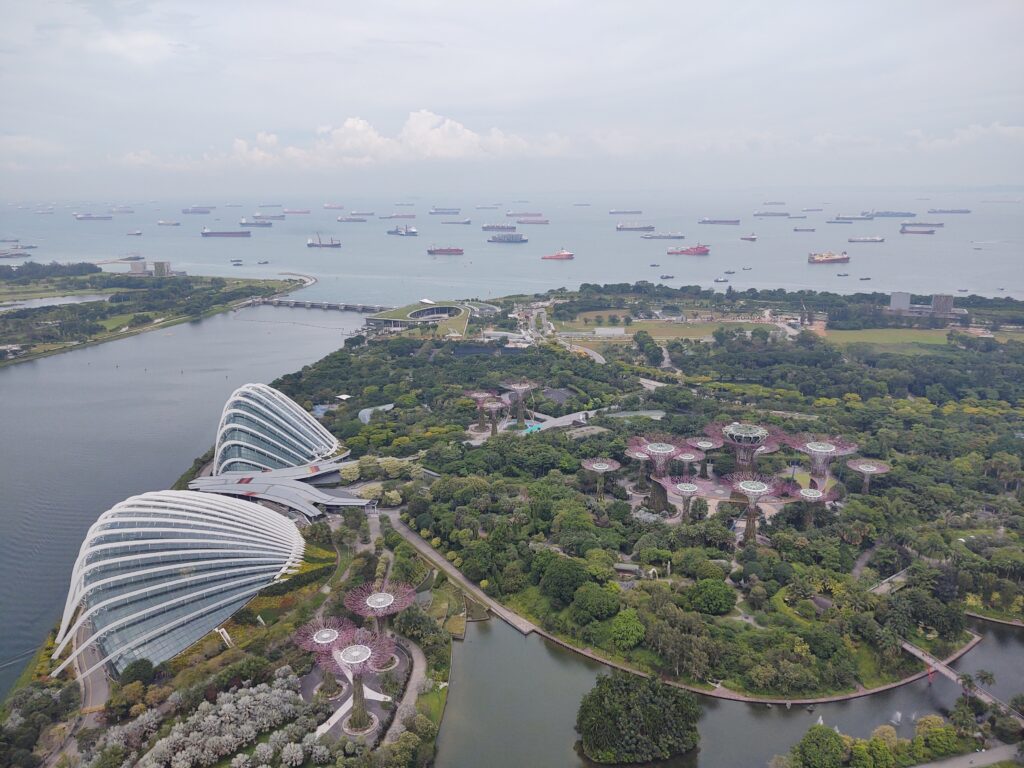
The centerpiece of the gardens is its famous “supertrees.” These are giant, foliaged, tree-like steel sculptures arranged in a huge grove and connected by a skywalk. I strolled in during the free nightly lights show. Music filled the air, with songs about the beauty of “Singapura” — Singapore’s more melodic, Malay name — while lights bounced around the supertrees in a flashy choreographed unison. Hundreds of spectators stared in awe on the grove floor below.
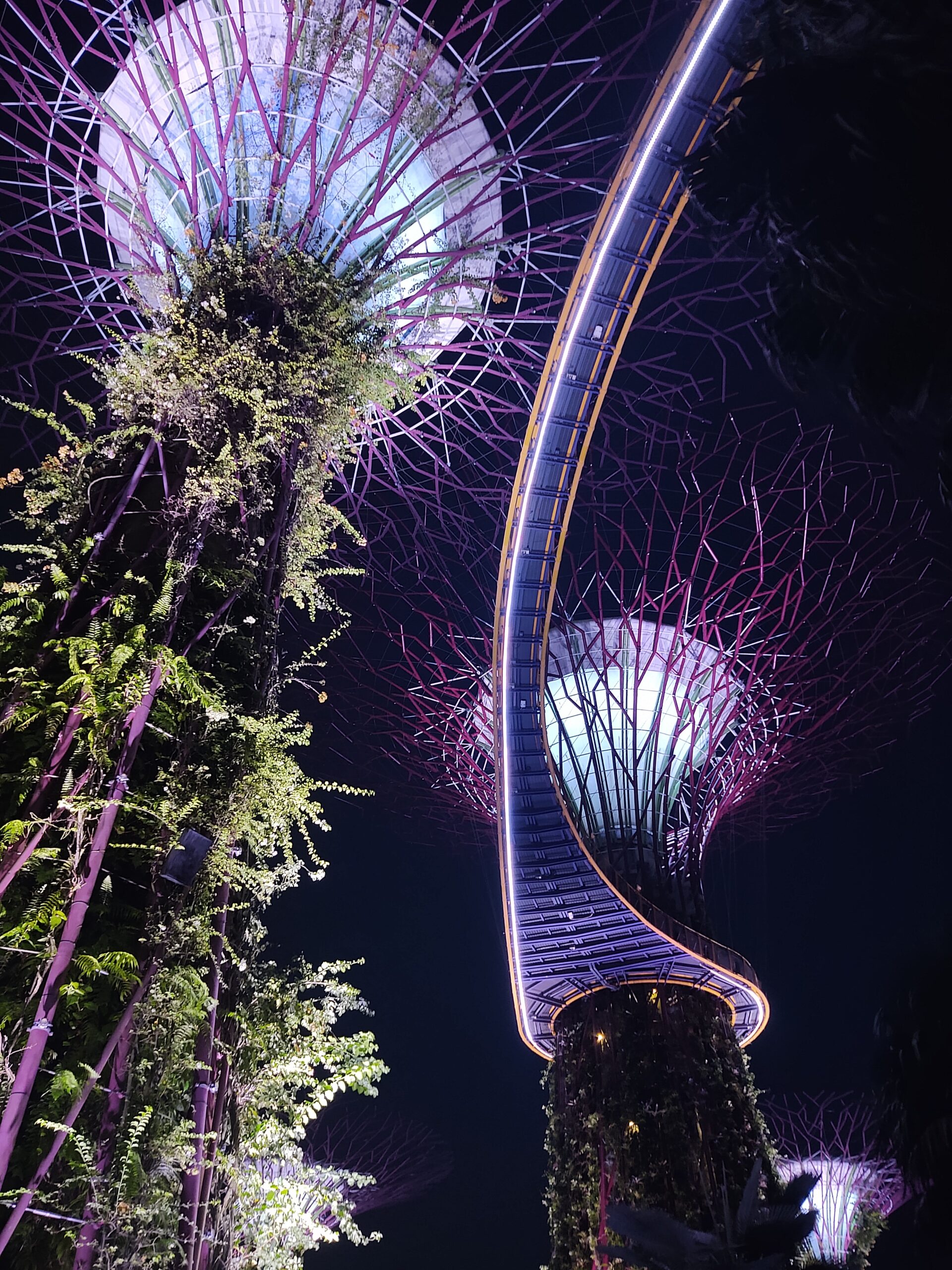
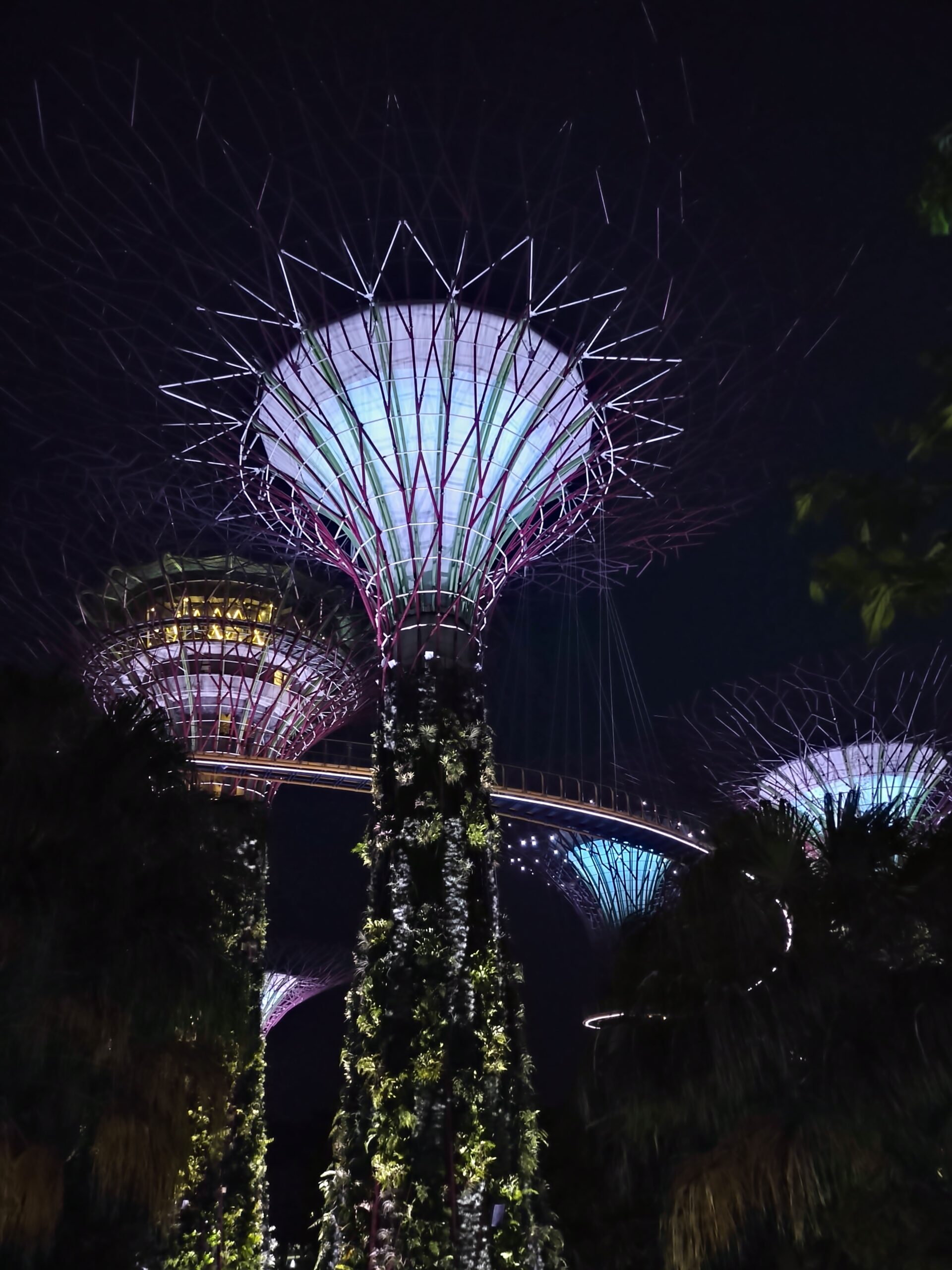
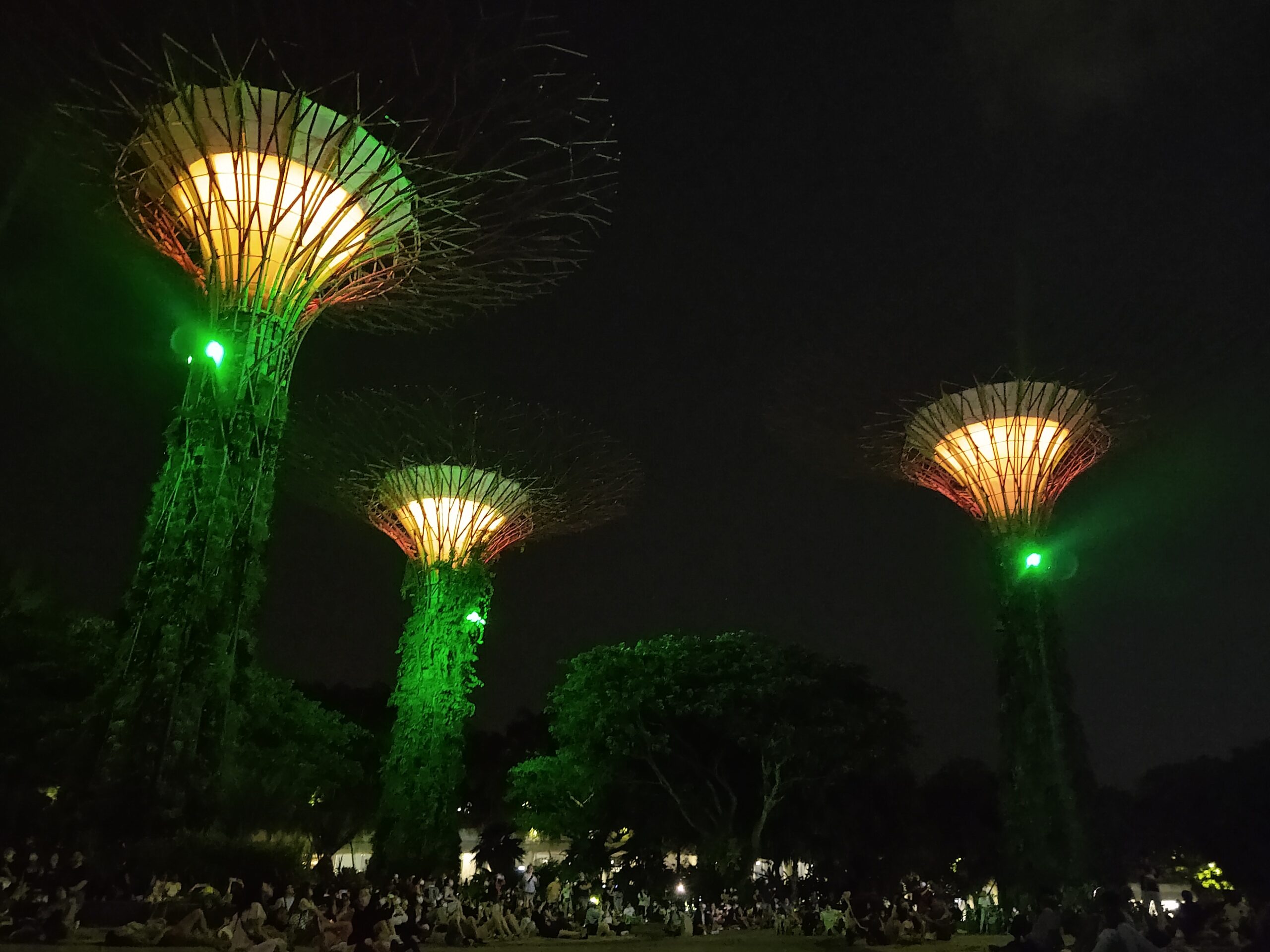
During the daytime, I also got to visit the gardens’ two domes. Each dome is a giant greenhouse holding a plethora of carefully manicured plant life. The Flower Dome has rotating exhibitions: While I was there, these included a Peranakan mansion and a Chinese artist’s garden. The Cloud Forest dome features a giant waterfall, tower, and meandering skywalk with beautiful views over the bay and of Marina Bay Sands. Besides the beautiful horticulture, wooden sculptures of animals added some flavor to each dome.
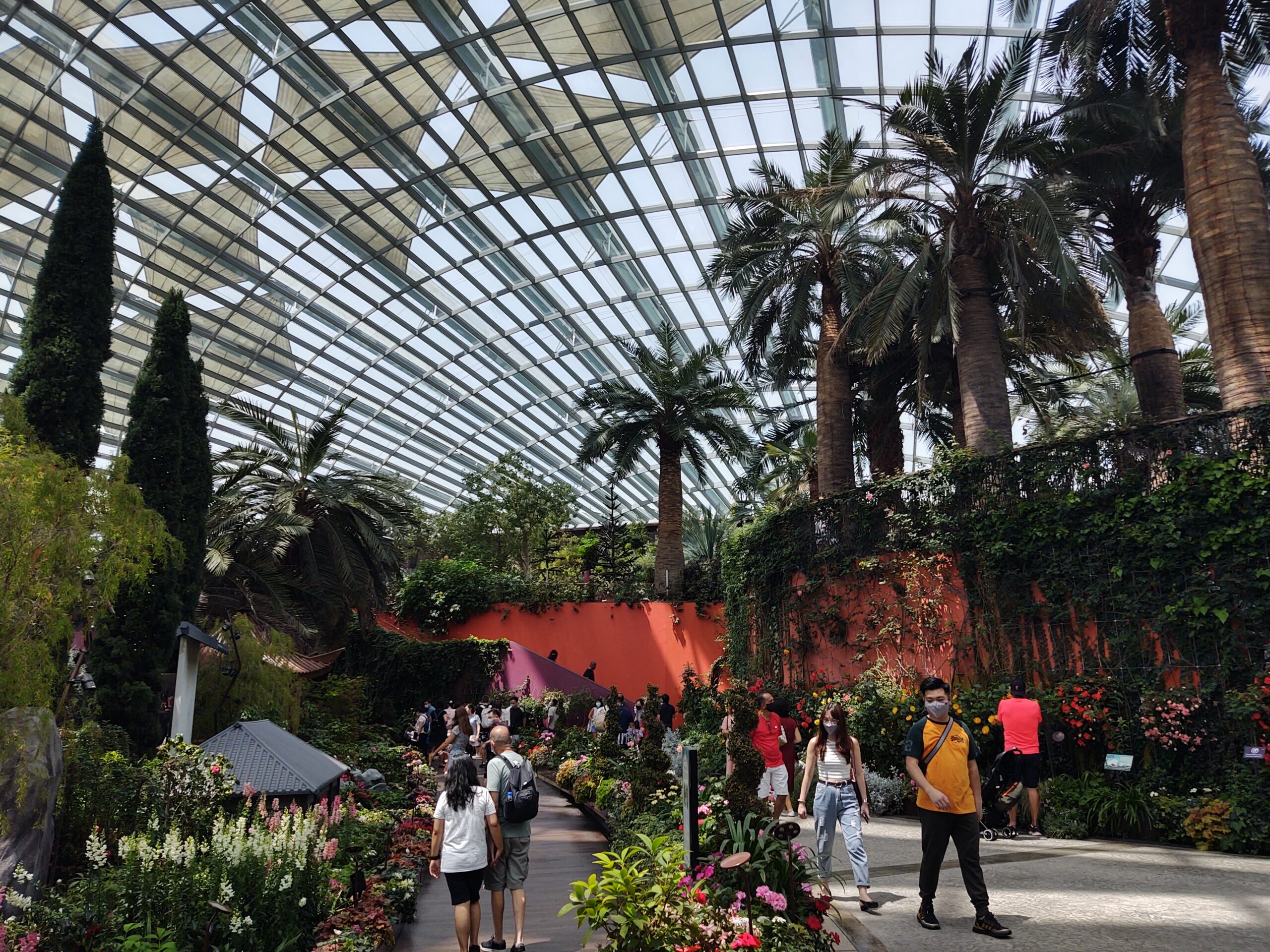
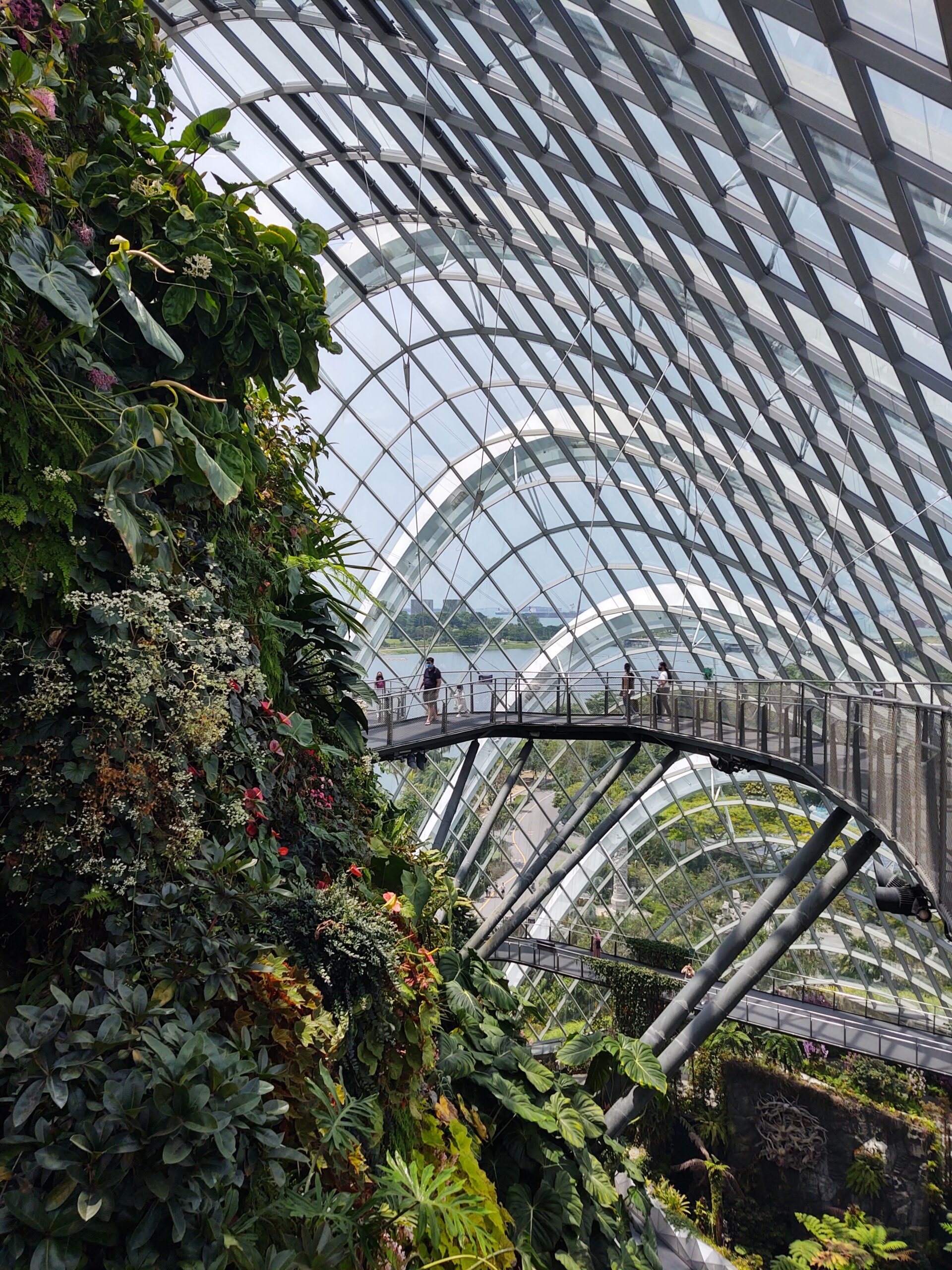
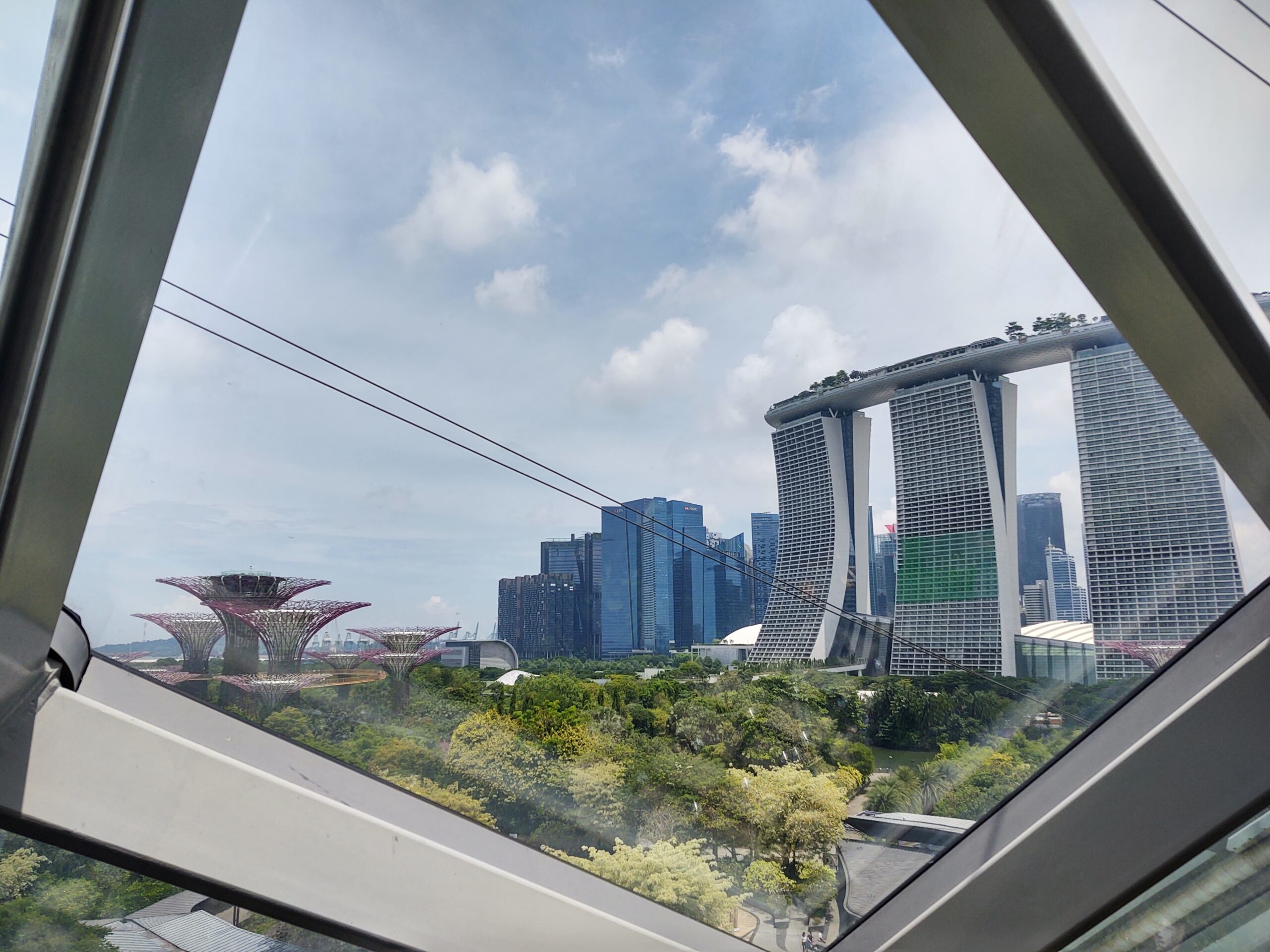
Marina Bay Sands
Marina Bay Sands, or MBS, towers next to the Gardens by the Bay. It’s a giant, futuristic-looking three-tower structure with an immense boat-shaped terrace connecting them on top, complete with an infinity pool (for hotel guests only) alongside a rooftop observatory with great views of the city. The view of the Central Business District, just across the bay, is spectacular: a nest of skyscrapers and narrow streets that house colossal multinational corporate offices. I also laughed when I saw an endless expanse of hundreds — perhaps thousands — of tanker ships offshore, waiting to enter one of the world’s busiest harbors.
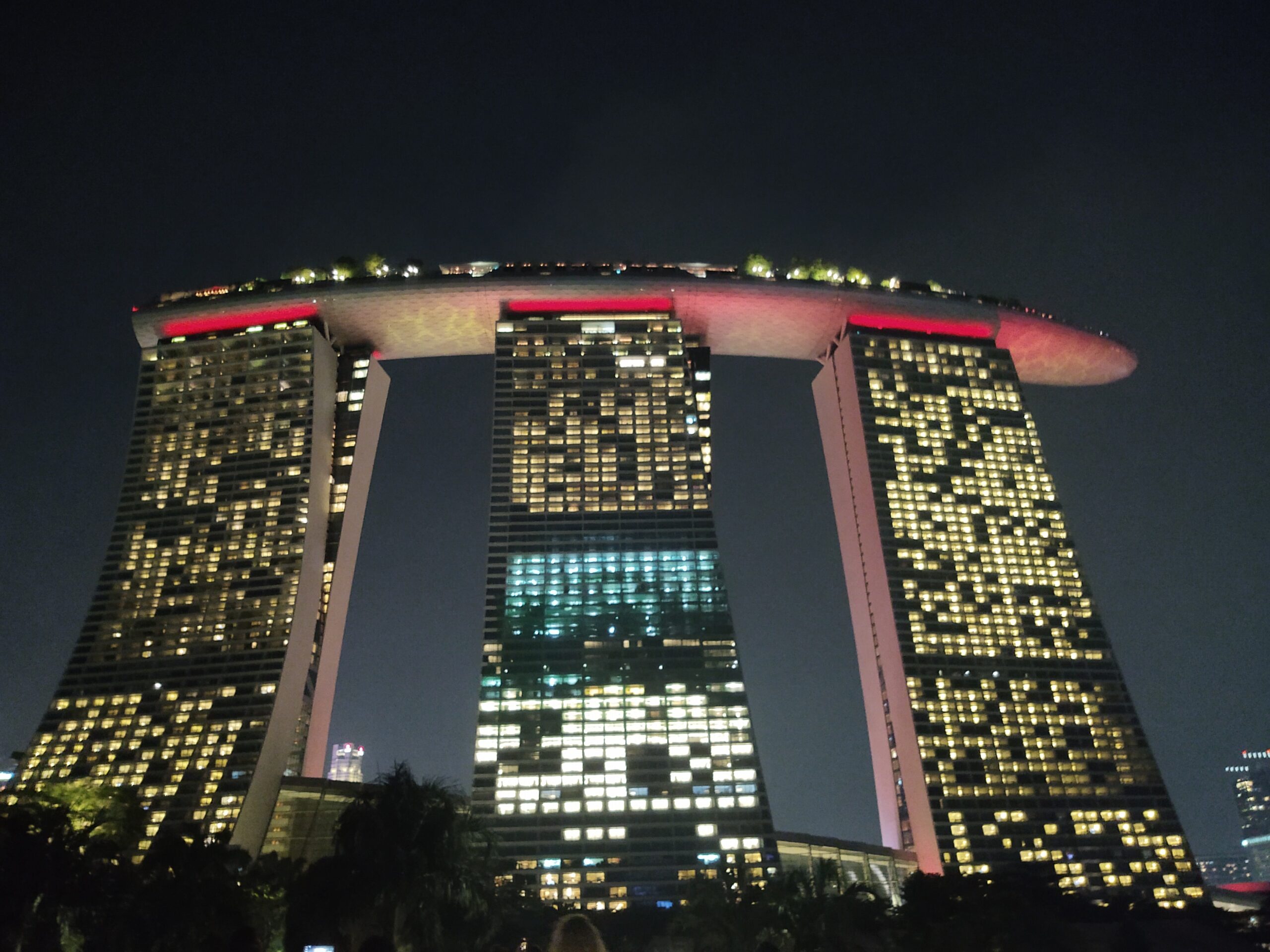
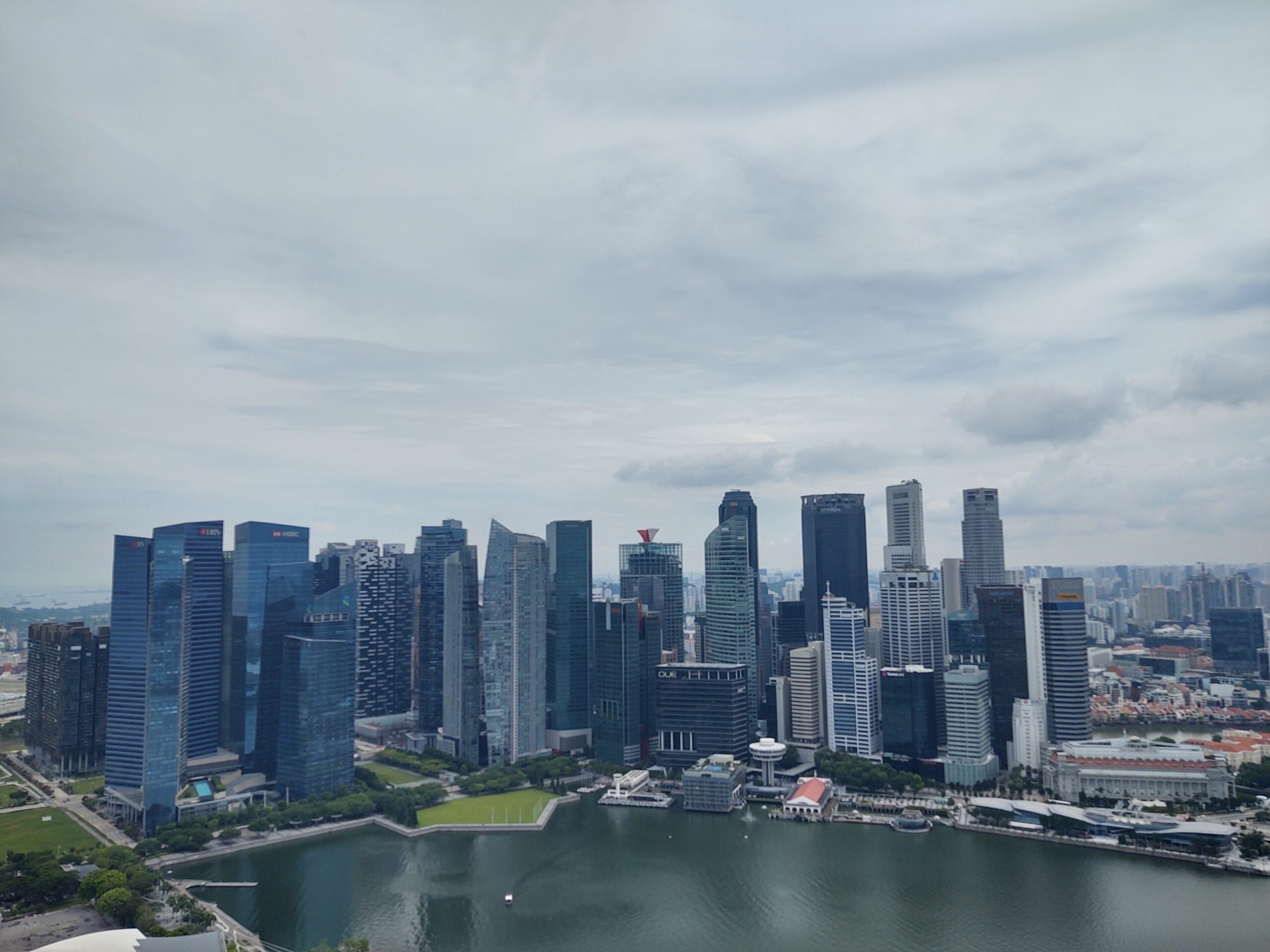
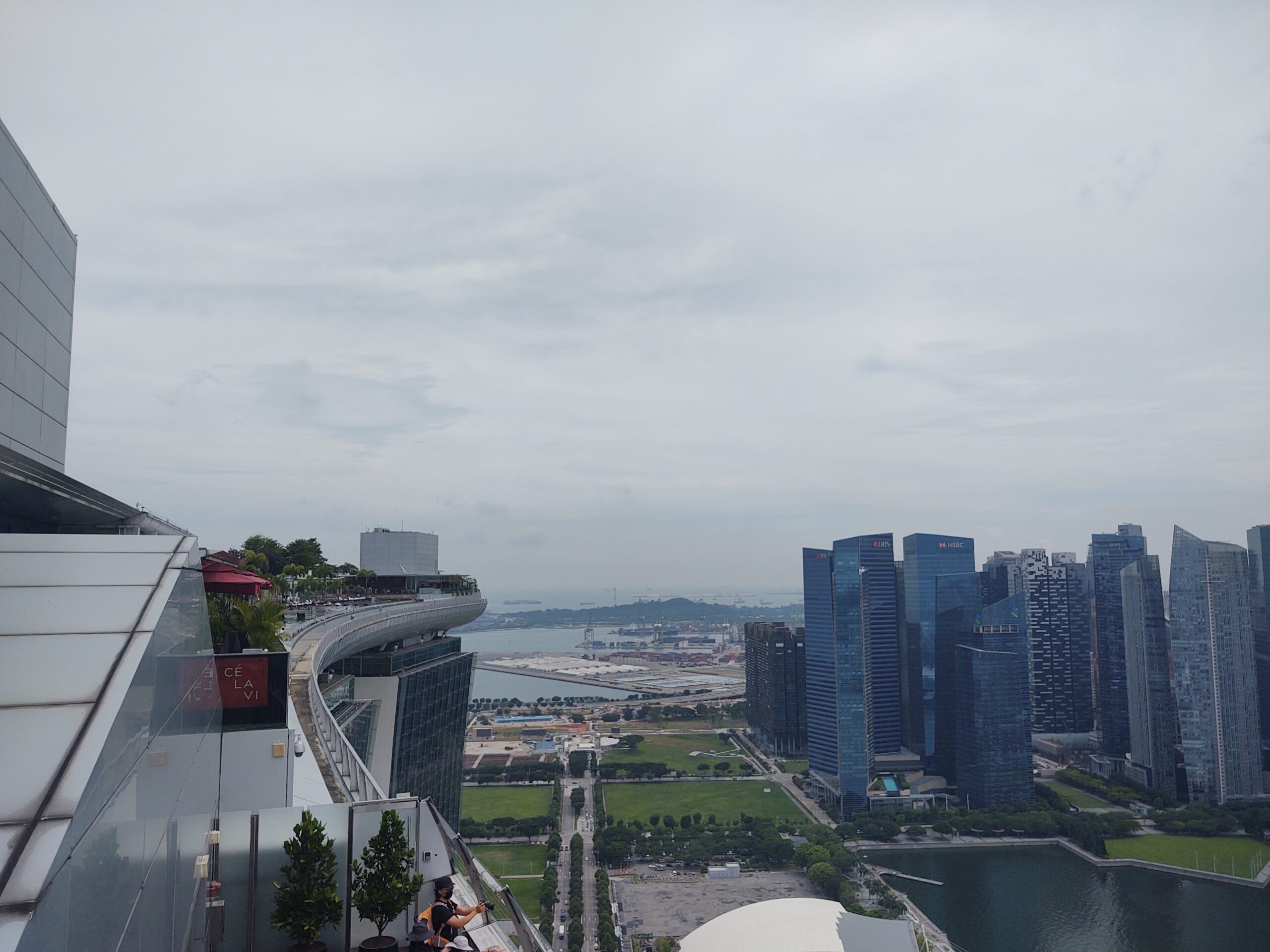
Besides the hotel, which opened in 2010, MBS holds an ultra-fancy shopping mall, reminiscent of the Galleria in Milan for its arched glass skylight. Picture the movie Crazy Rich Asians.
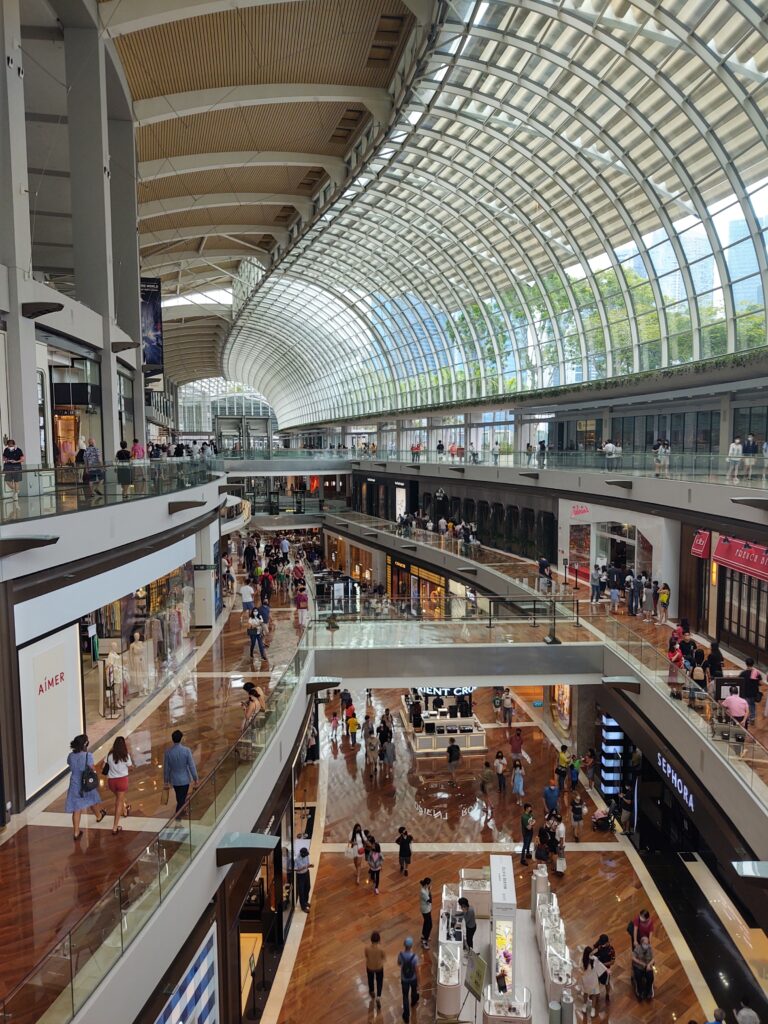
If all the shiny marble Gucci, Versace, and Bulgari designer shops don’t seem over-the-top enough, there’s even a boat ride on the bottom floor, like something you’d see at an amusement park. My friend KC, a Singaporean of Cantonese descent, explained that this is in homage to Macau, a beautiful and historic canal city of southern China.
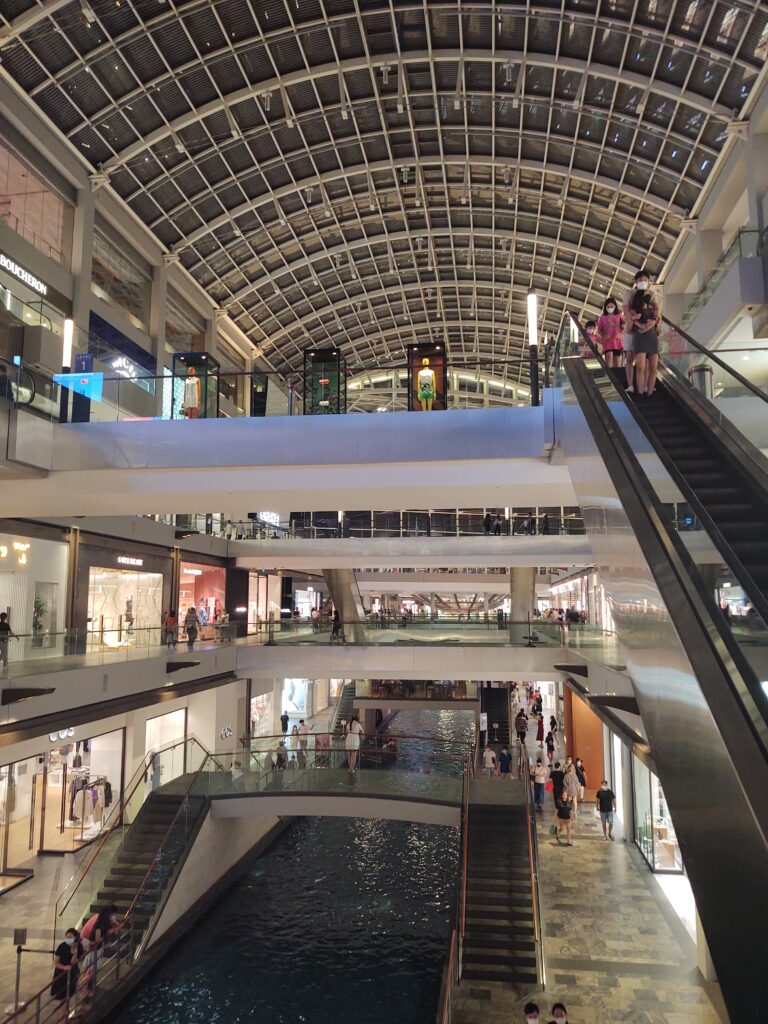
Recently built, both MBS and Gardens by the Bay are located on a strutting peninsula from the island which, KC explained, is reclaimed land. This area used to be ocean, so Singapore imported a giant amount of sand and dirt from nearby countries to make the island just a smidge bigger. For good measure, they sat the finest world-wonder-scale attractions right on top. They’re not done, either — a new, even more luxurious hotel is being built right next to $1,000 per night MBS, expected to open in around five years.
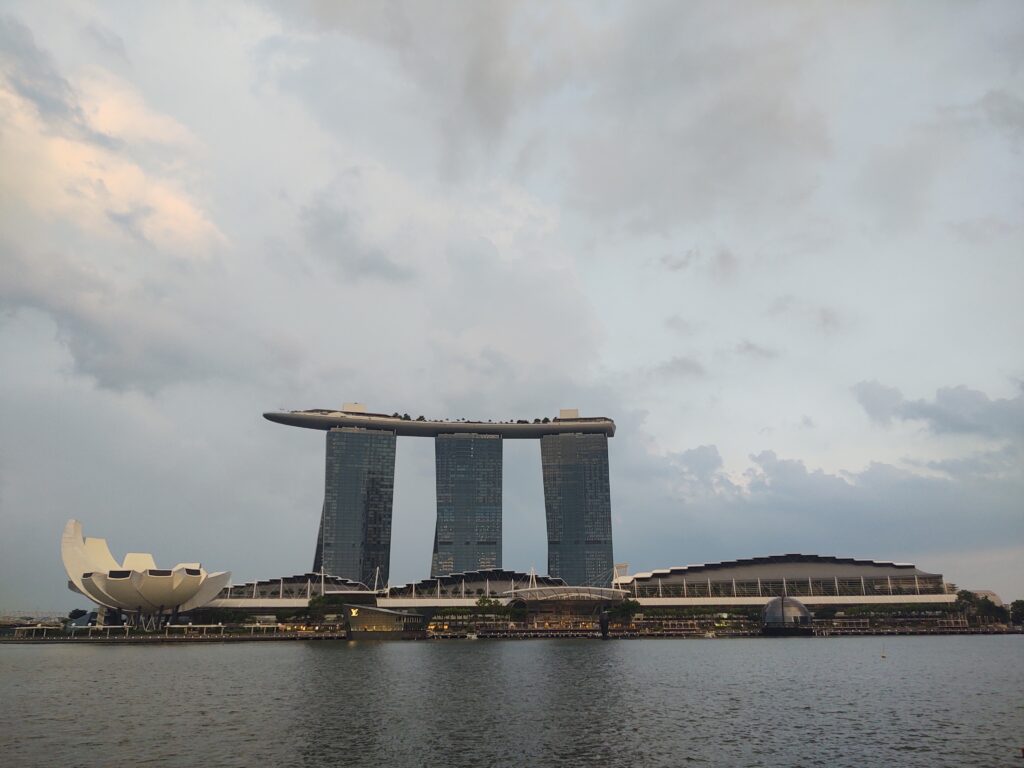
With all the rotating exhibitions and continuous construction of increasingly tall skyscrapers, it’s not an exaggeration to say that Singapore is in a constant state of flux and development — an endless one-upmanship with ever nicer, more beautiful experiences repeatedly being built and discovered anew.
Central Business District (CBD)
Along the shores across from MBS, a gorgeous harborwalk, featuring incredible views, rolls along the shores of the Central Business District (CBD). I enjoyed a sunset stroll here, marveling at the density of the skyline and the utterly perfect, fantastic-view-at-every-step boardwalk. In one corner, the Merlion statue — half-lion, half-fish — is like a national mascot, spewing water into the sea.
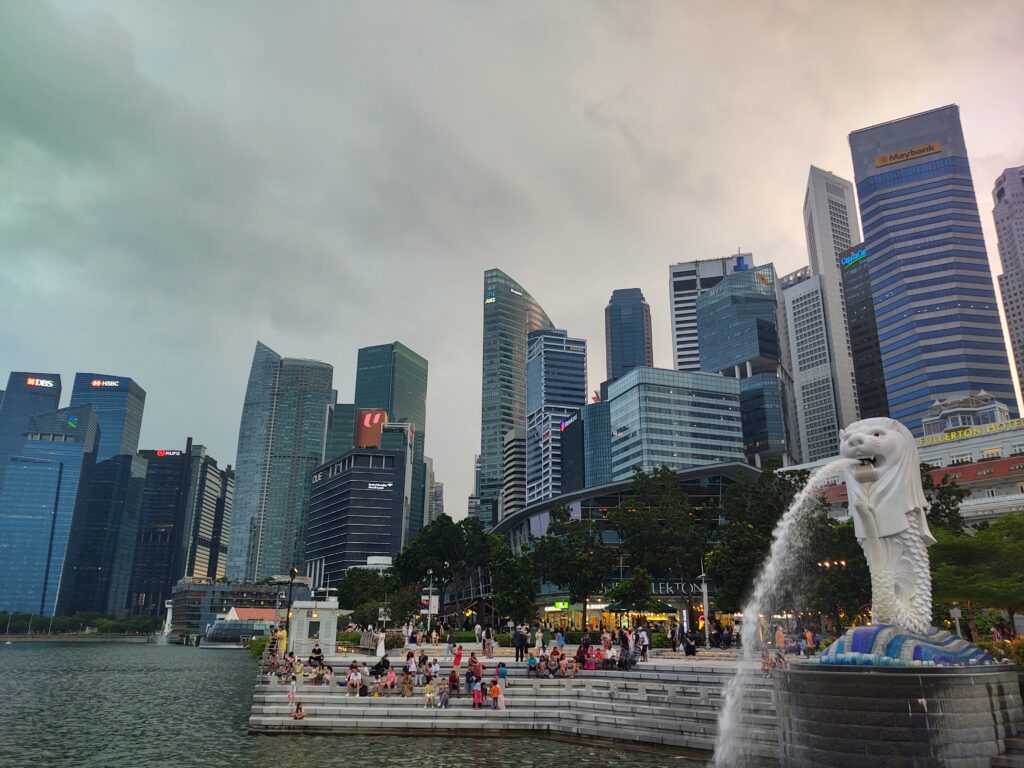
Chinatown
Behind the CBD is a Chinatown like none other in the world. Instead of congested streets and fluorescent lights, Singapore’s Chinatown is a classy, colorful fusion mix of narrow pedestrian street markets and the occasional temple, such as the Buddha Tooth Relic Temple.
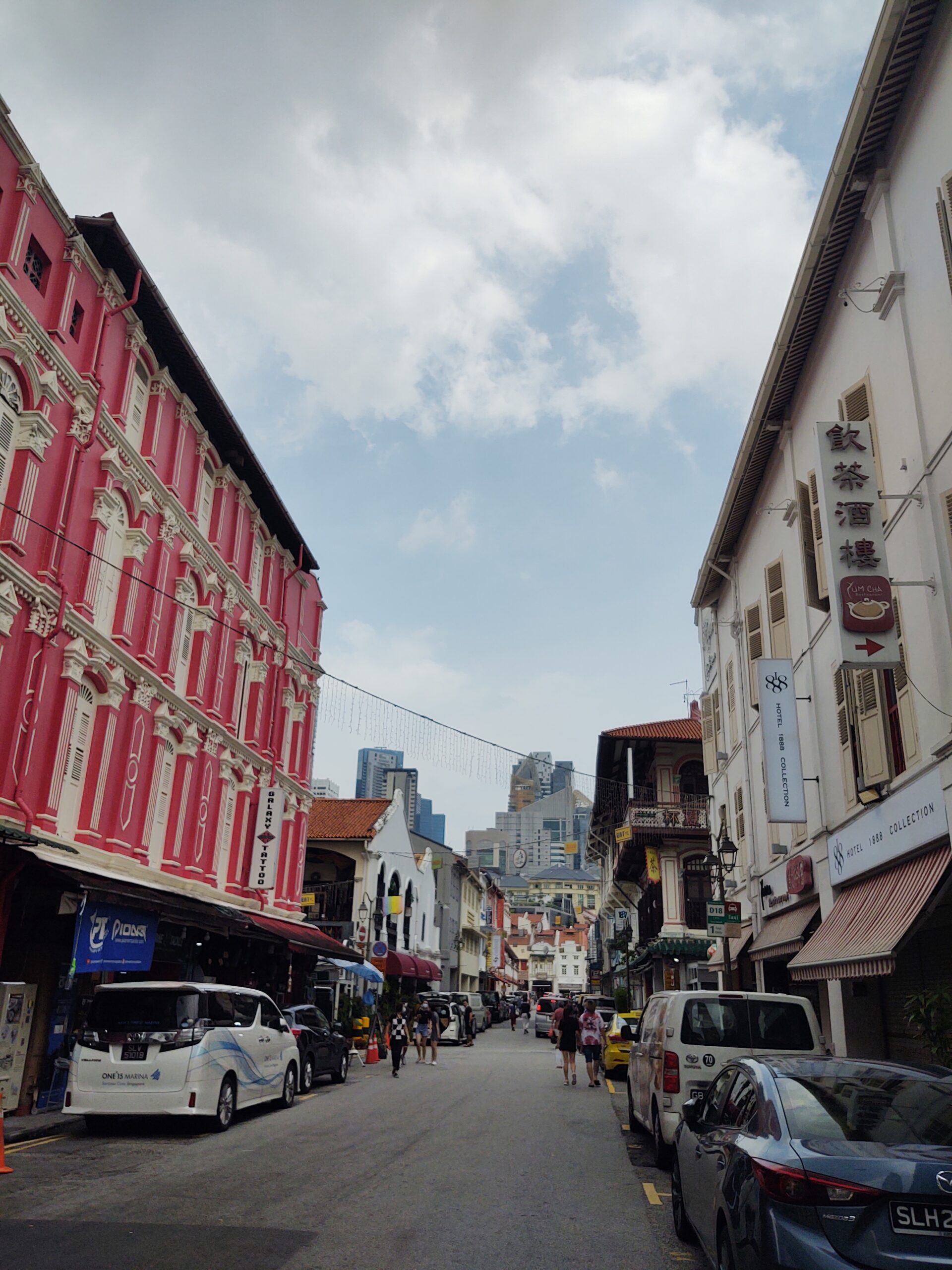
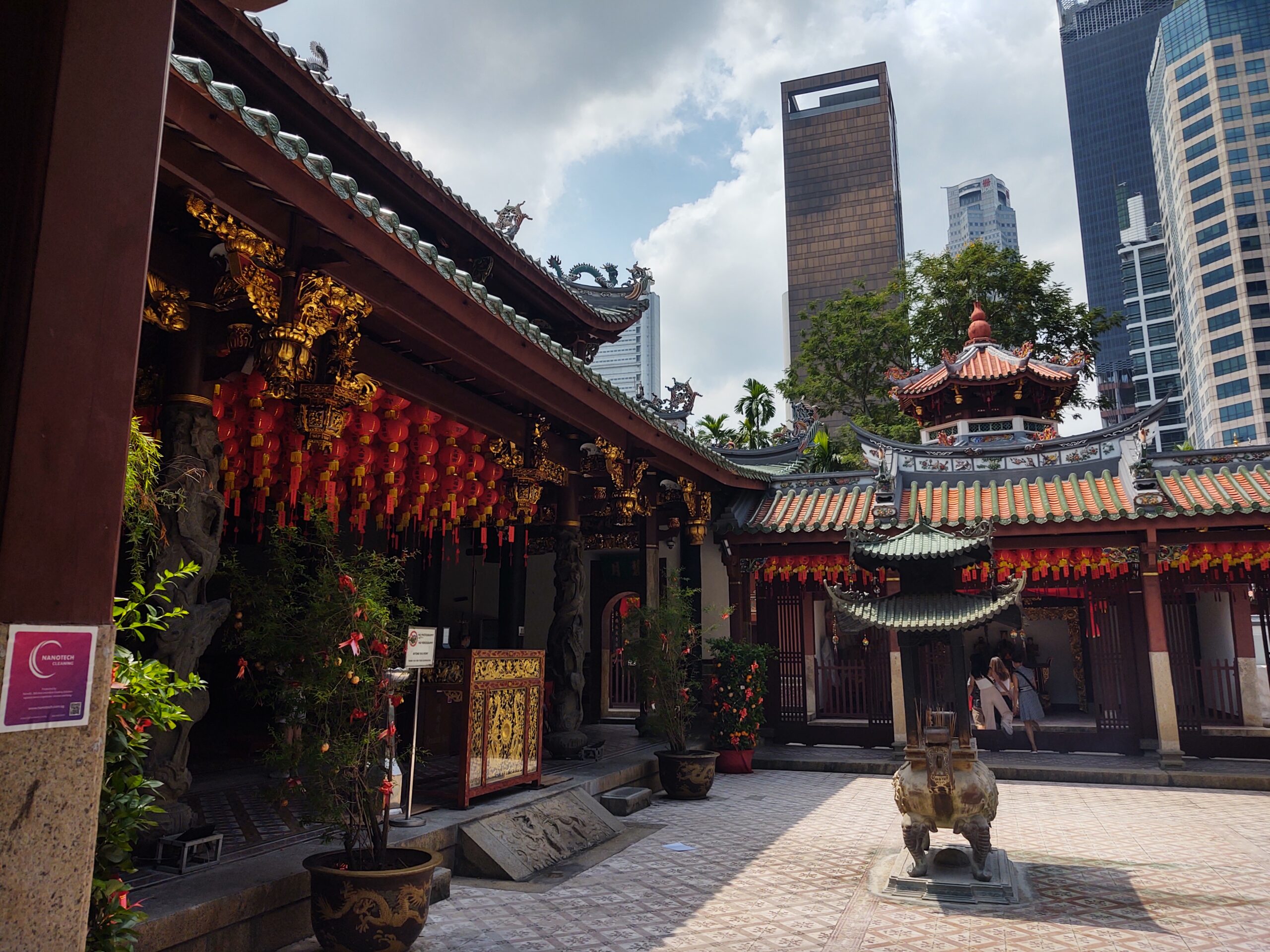
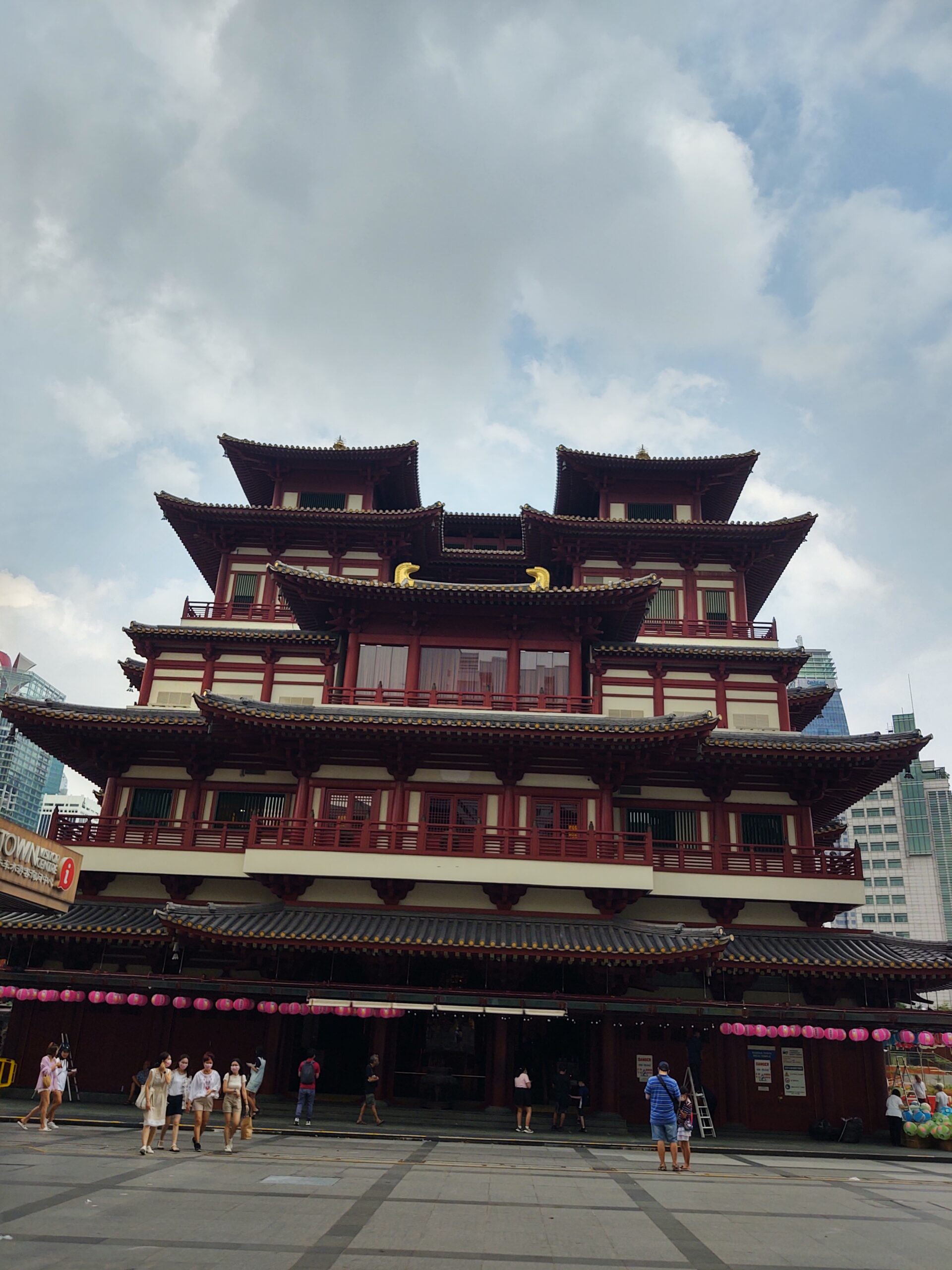
I stopped for some tasty food at a giant hawker center — Singapore’s version of streetfood, featuring small permanent stalls situated in immense food courts. I found a place that looked good and joined a long queue (always a good sign). As I was nearing the front, they started to close. A woman came by to take everyone’s orders; I just barely made the cut before they ran out of delicious, savory chicken rice — a national favorite.
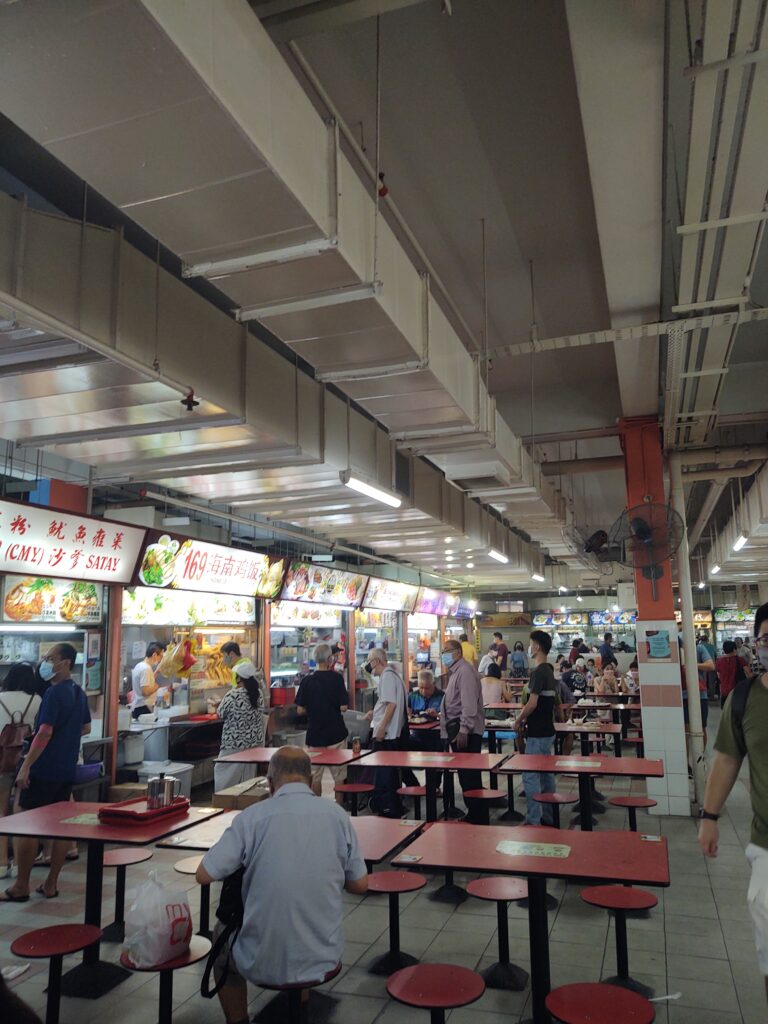
Boat Quay and Clarke Quay
North of Chinatown along the Singapore River, Boat Quay (pronounced “key”) and Clarke Quay feature more winding riverside walks with beautiful views and a plethora of dining and nightlife options. Across the river from Boat Quay, towards the Merlion statue, I recommend checking out the Asian Civilizations Museum and the Esplanade theaters if you have extra time.
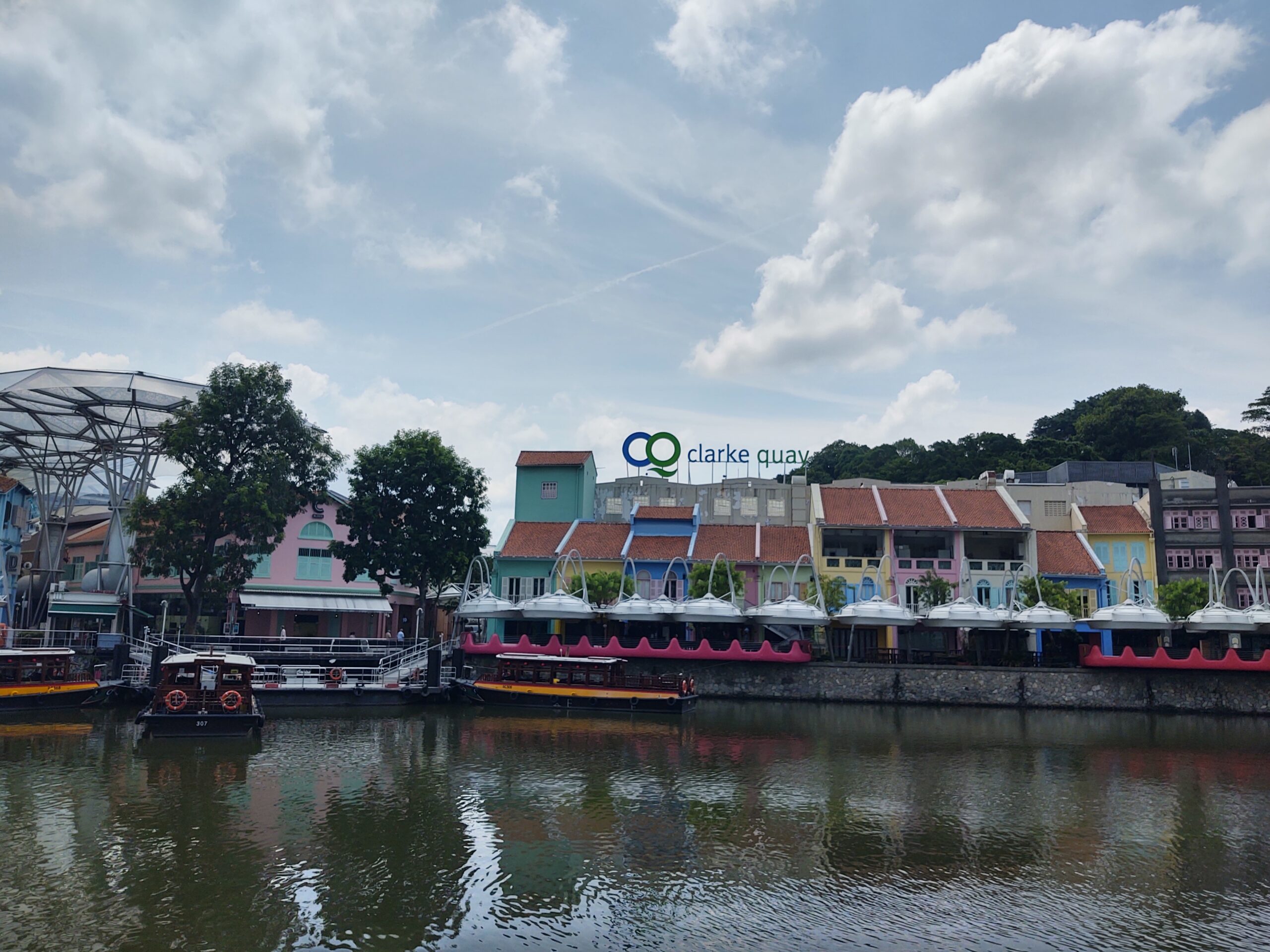
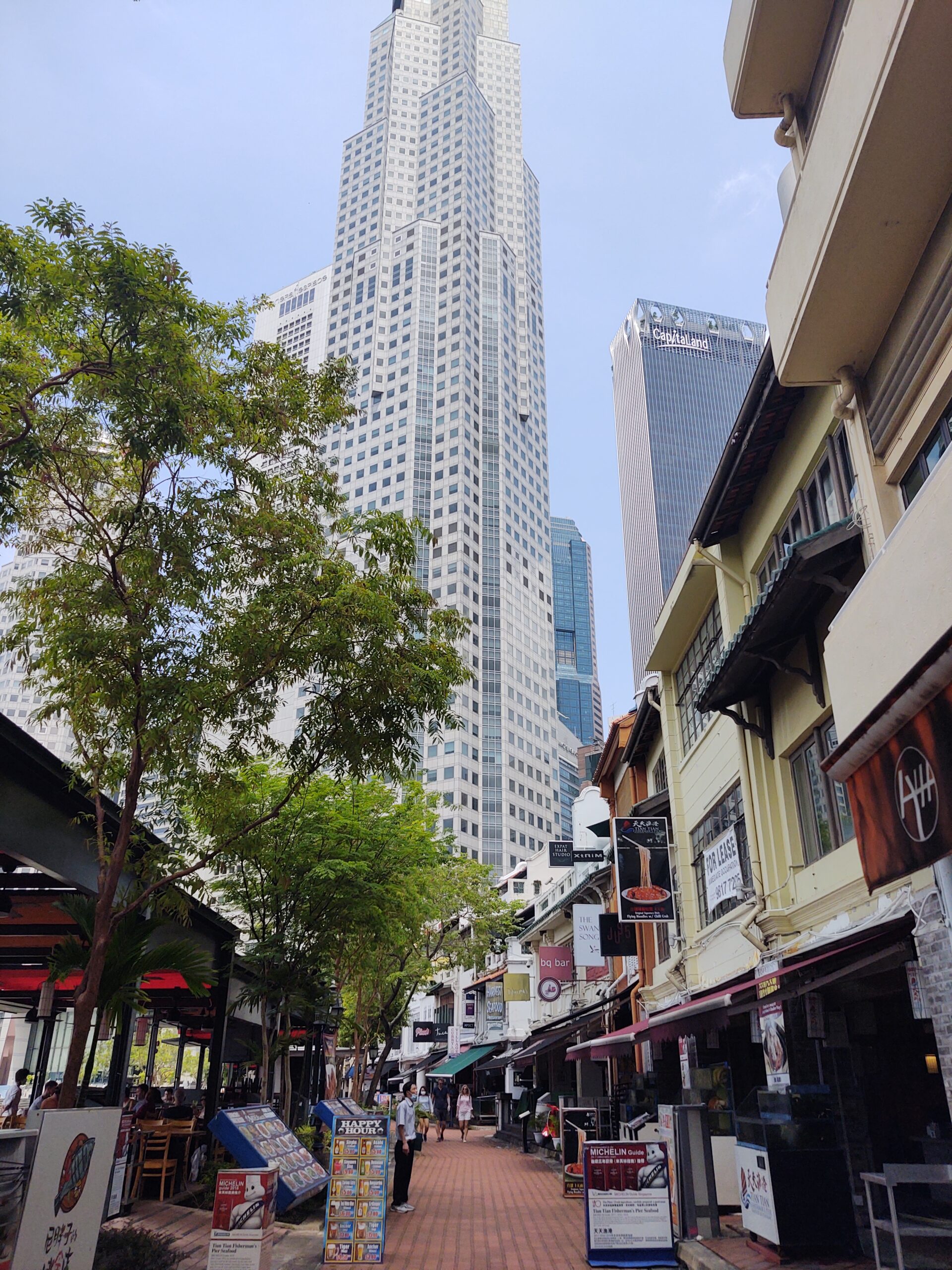
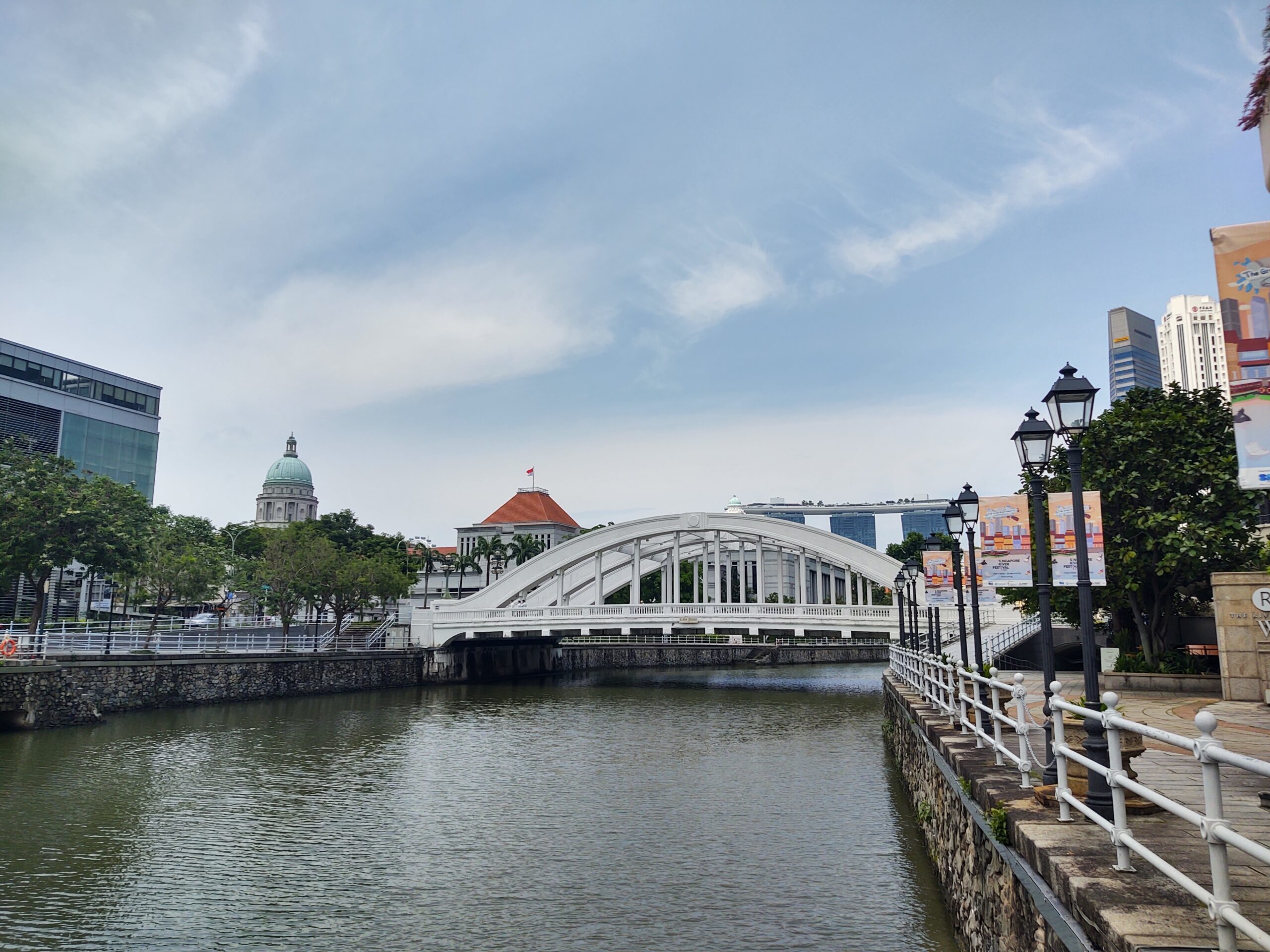
Orchard Road
Further north of the quays is Singapore’s most famous shopping street, Orchard Road. Like MBS mall, this area is quite fancy and packed with designer-store shopping malls. It’s a beautiful street too. Every building is carefully set back from the road, providing a uniquely open urban aesthetic. Be sure to pop into one of the malls for some window-shopping and a wide variety of tasty food.
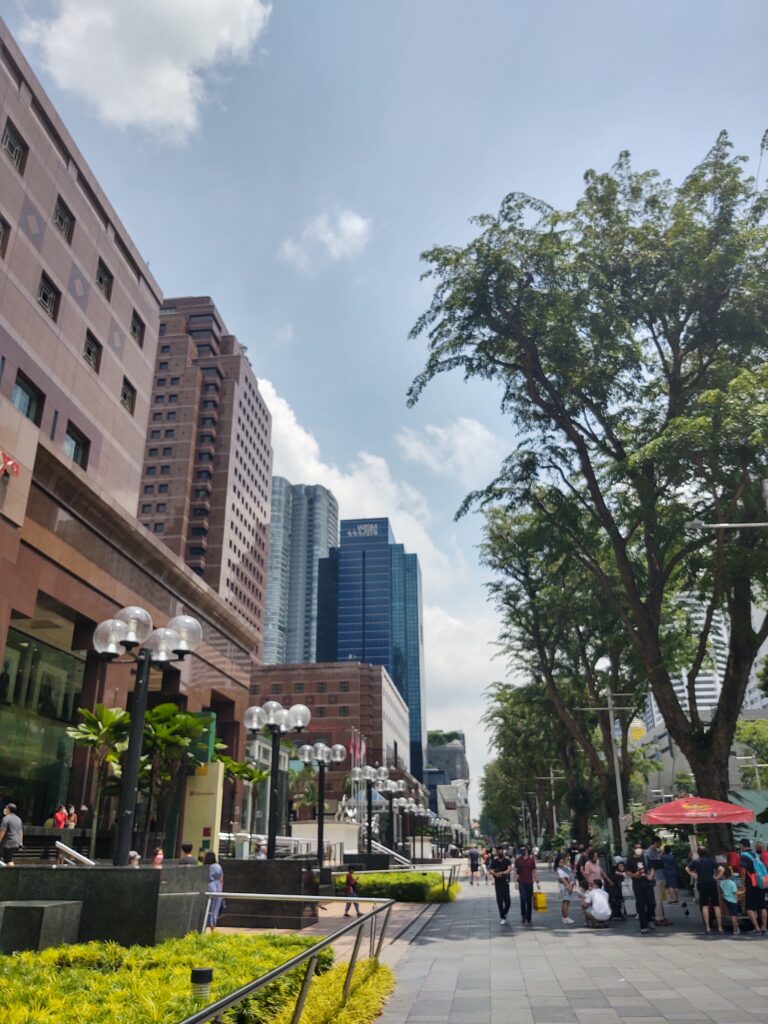
Little India
Just east of Orchard Road, colorful buildings line the streets of Little India, another multicultural neighborhood in a nation with an enormous number of immigrants from Southern India. KC and I visited Little India on a national holiday: the Malay new year, Hari Raya. Without their busy jobs to get to, masses flooded the packed streets. Swarms of people flocked around chai tea street stands, Hindu temples, and fragrant Indian restaurants serving fusion interpretations of South Asian dishes.
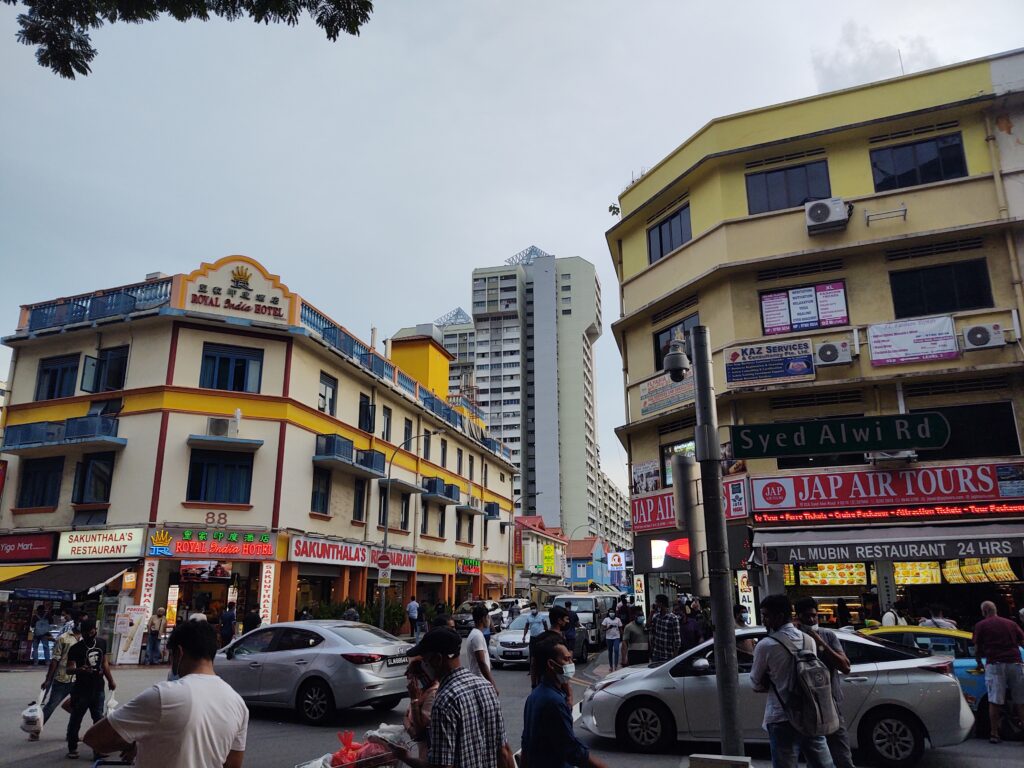
Though I’ve never been to India, the colorful charm of this noisy, crowded brouhaha was perhaps the closest experience I’ve had to being in one of the subcontinent’s bustling cities. South of here is the Bugis neighborhood, with more colorful buildings, narrow streets, and the famous Sultan Mosque.
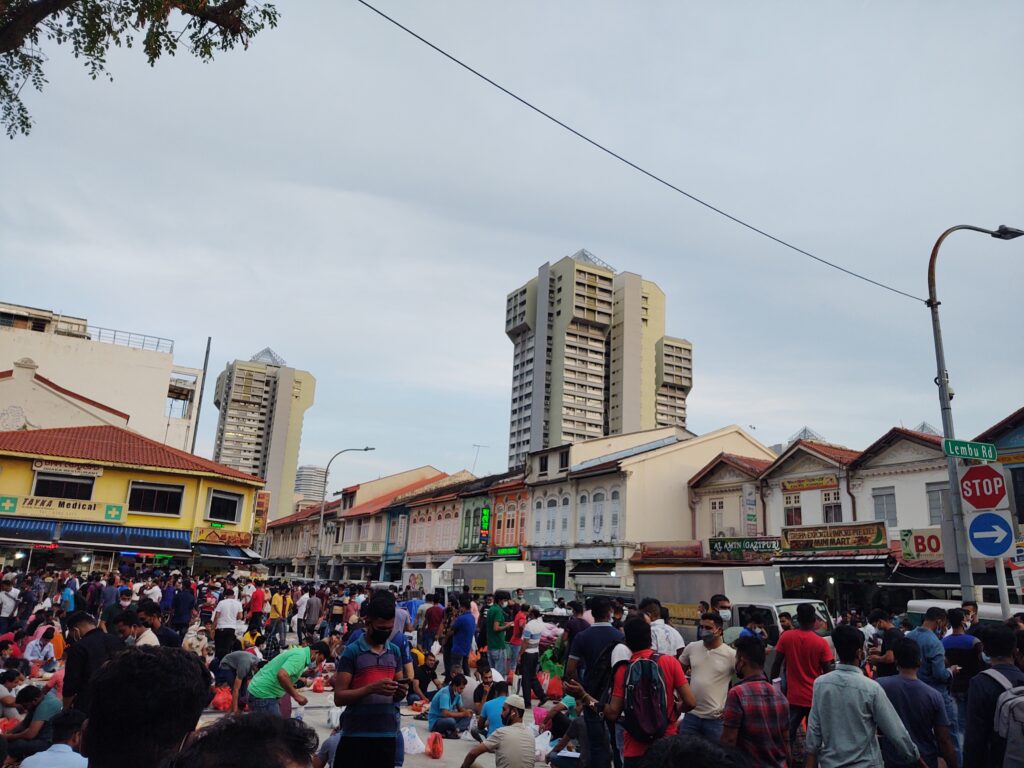
All the places I’ve mentioned so far are relatively close together, either within walking distance or a short ride on the island’s efficient and thorough MRT subway system. Their proximity means it’s possible to visit everything within a day or two, and they are the central hubs and destinations for travelers.
Don’t Miss These, Either
Besides all the places already noted, there are a few other spots you might consider visiting that are a bit more out of the way, but worth the trek.
Singapore Zoo
The Singapore Zoo is world-renowned, complete with a few pandas — including one bred in captivity. Having been to many zoos in my life and having seen Chiang Mai’s panda, I opted to visit the nearby Night Safari instead, which is a more unique adventure. A tram-ride quietly meanders through slightly illuminated quasi-natural habitats housing lions, hippopotami, rhinoceros, flamingos, tapirs, elephants, and more. It was fascinating to see the animals in this lower, more intimate light. They also have a show with owls and more creatures, including otters that have been trained to recycle!
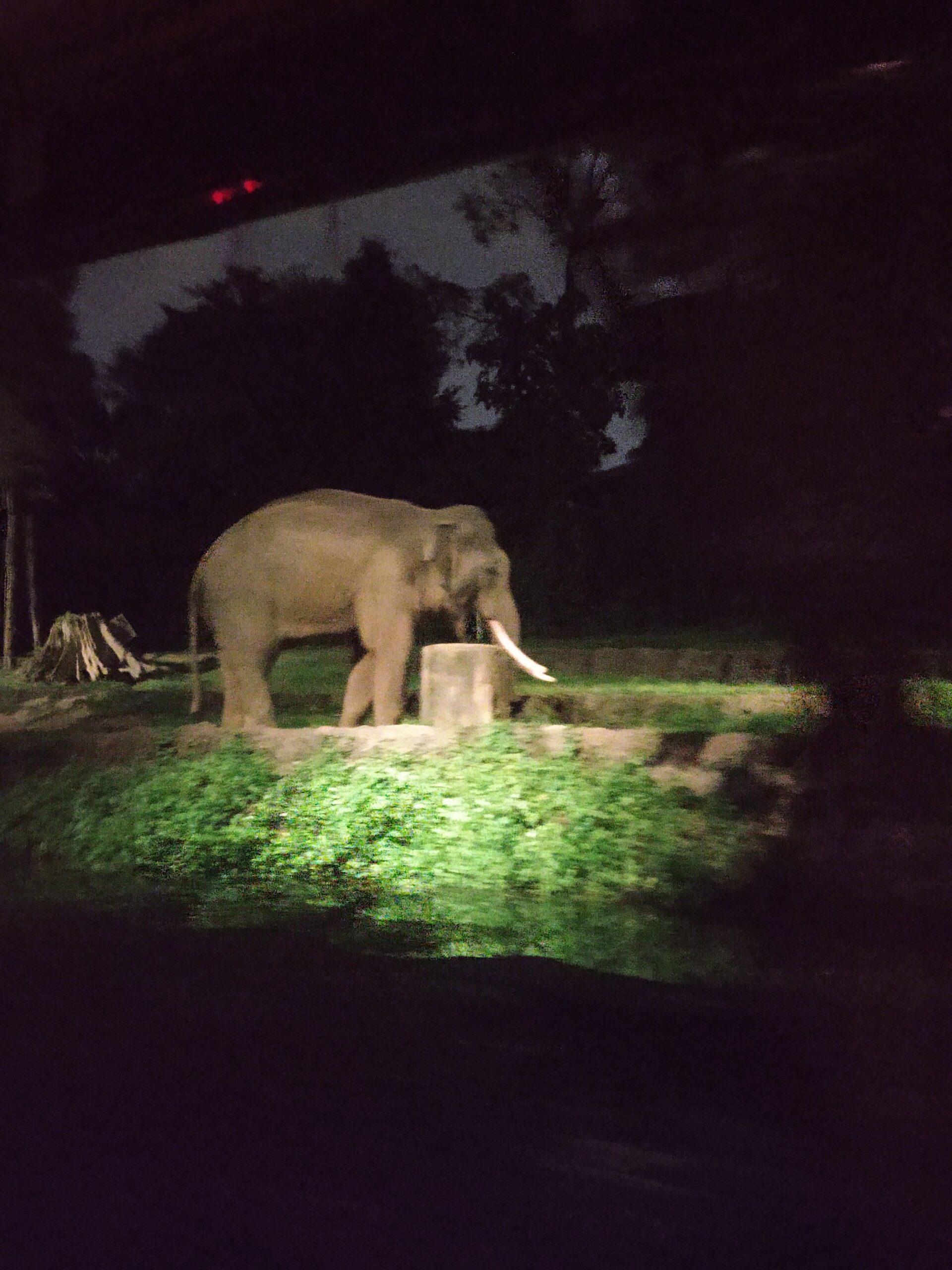
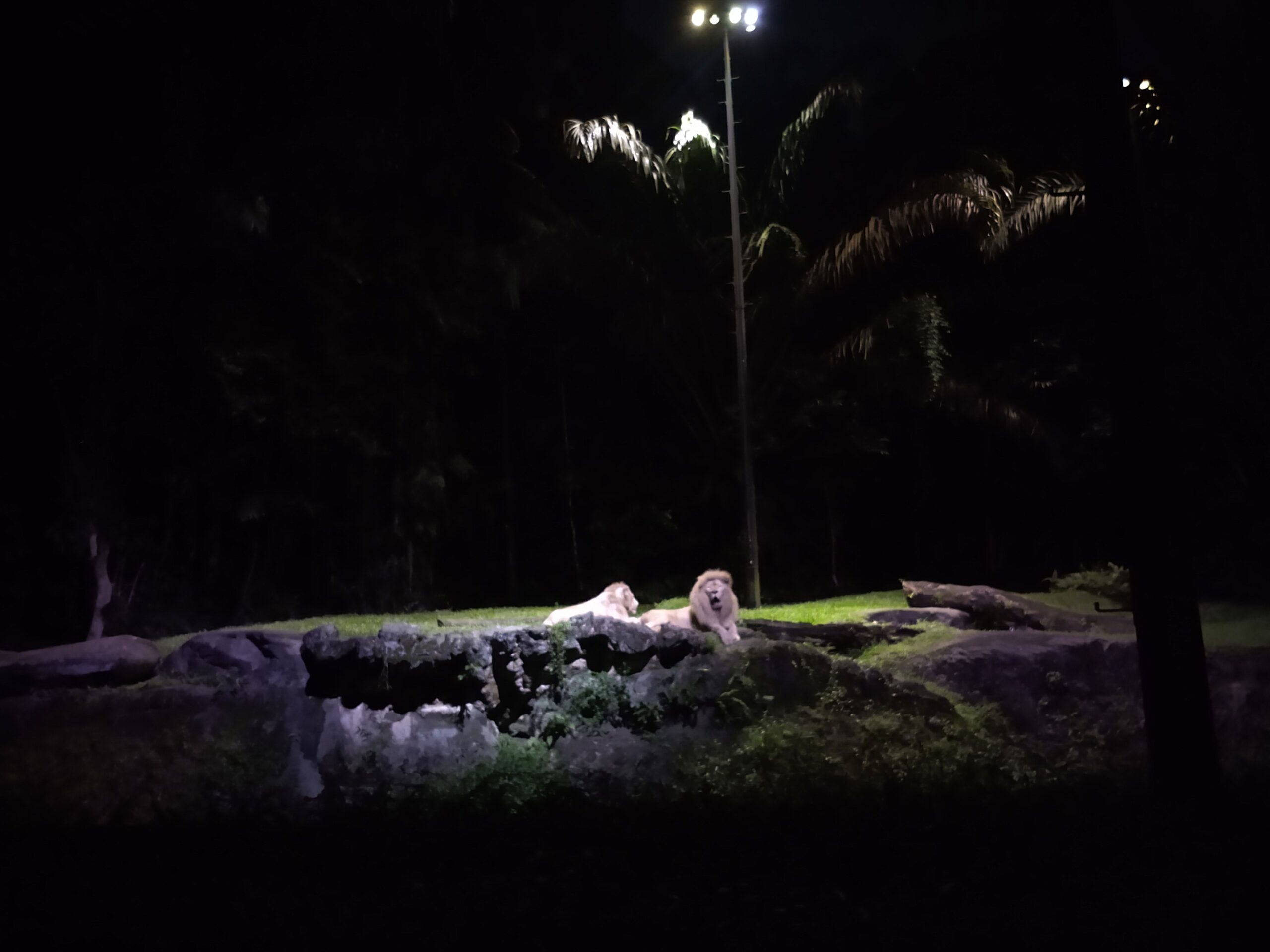
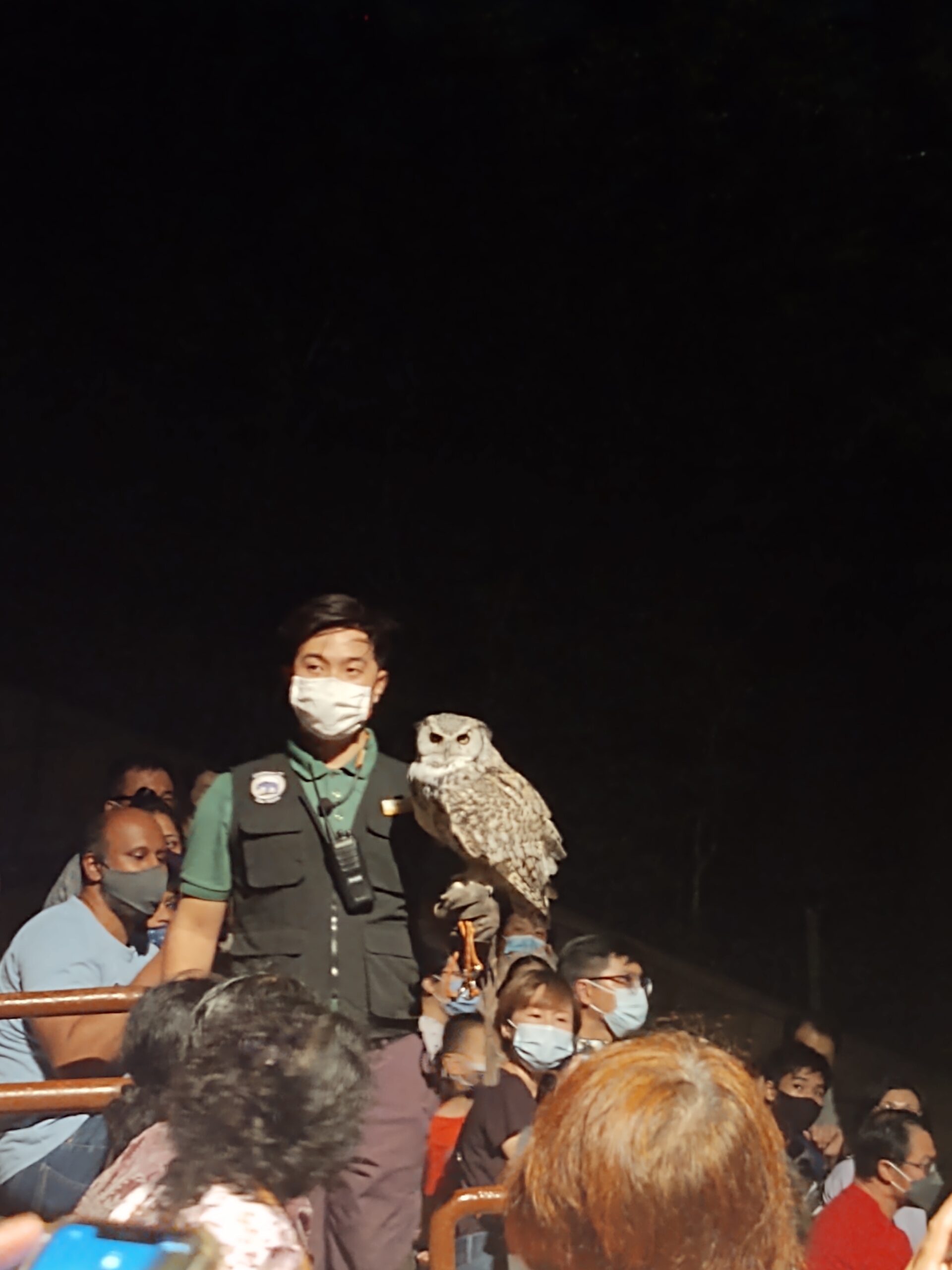
Sentosa Island
Singapore is not just one island — it’s a collection of 64 islands in total. Most of these are small and uninhabited, but just south of the main island is Sentosa.
Sentosa Island is home to resorts, theme parks (including Universal Studios), beaches, and a historic World War II fort. The tanker ships on the horizon made for an amusing view at the beach, but it still looked like a nice place to relax against the soft sand and calm surf. I’d recommend checking it out if you want a getaway from the big city to chill on the beach or go on some roller coasters.
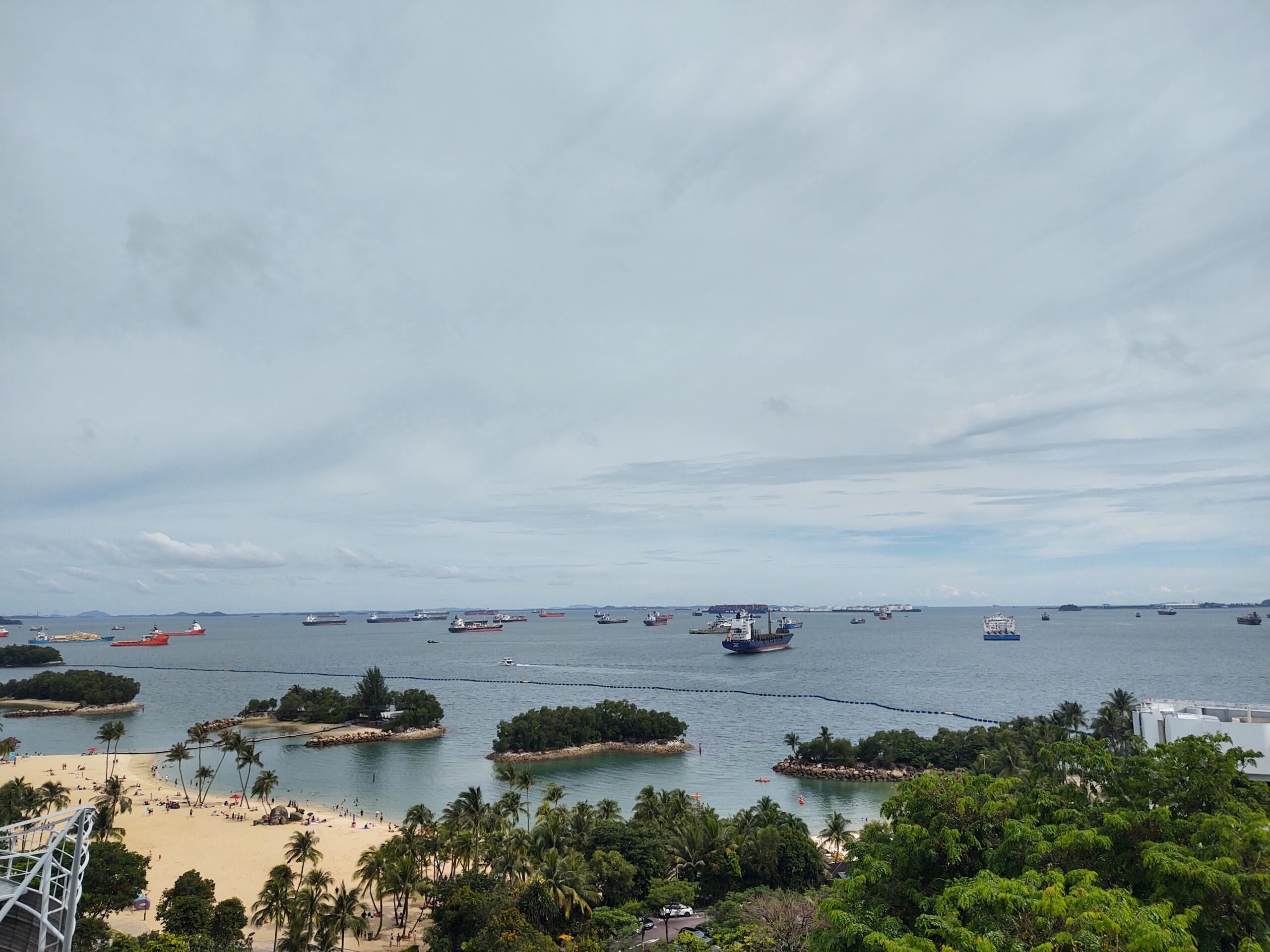
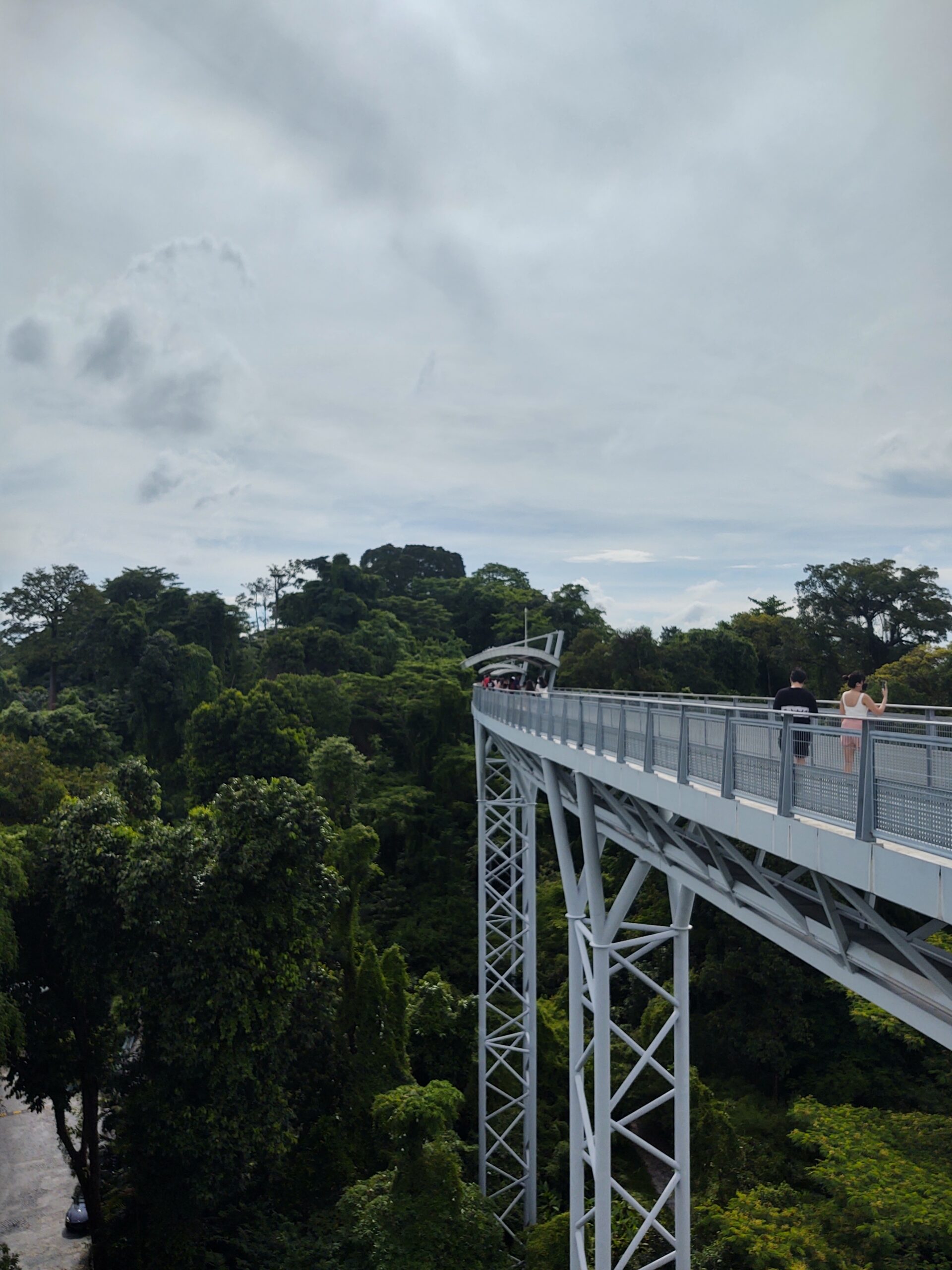
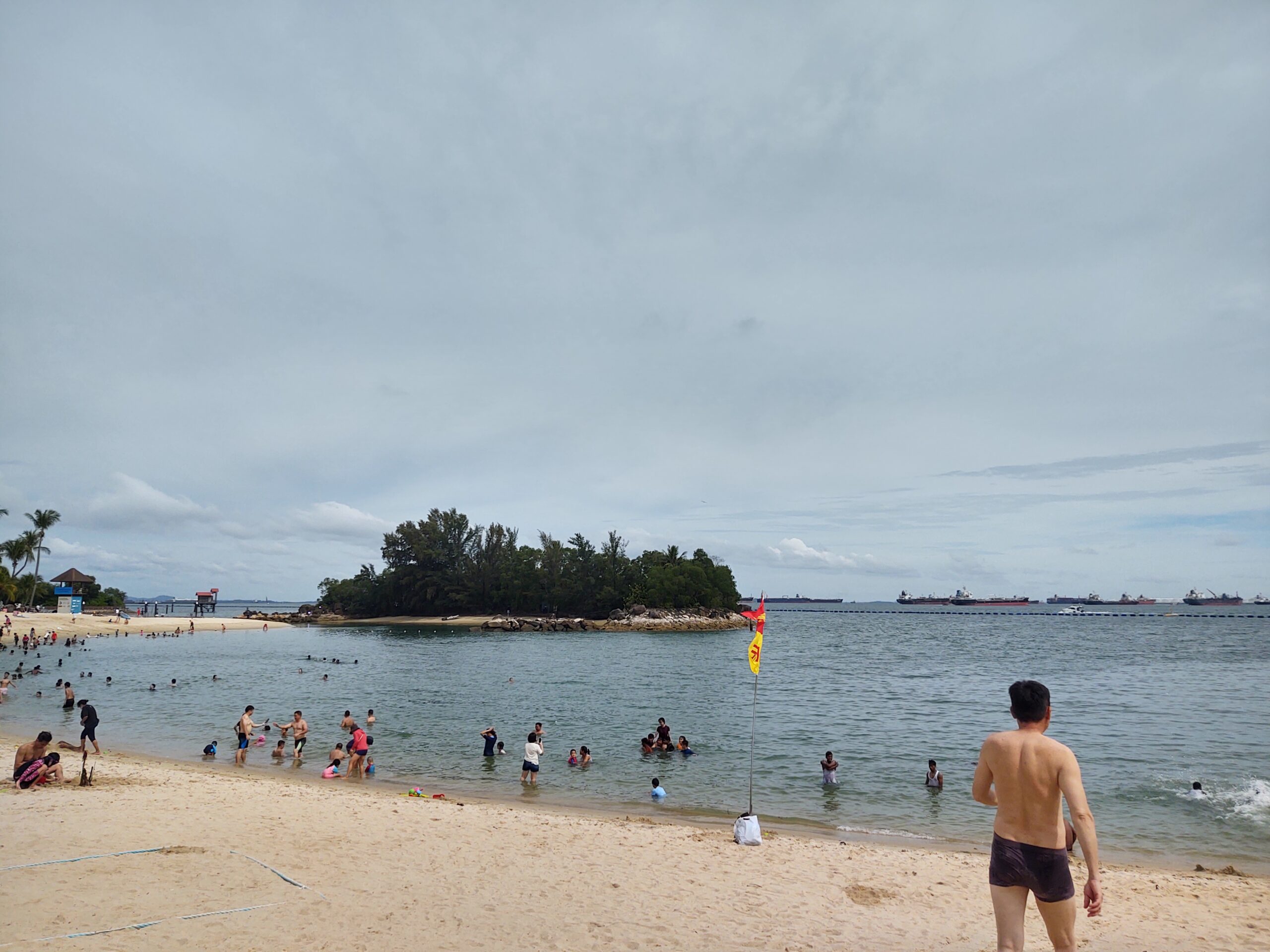
Nature Parks & Hiking Spots
Despite its small size, Singapore still has some interesting topography. You can hike or drive up Mount Faber for a good view of the city. There are also great trails at Southern Ridges and MacRitchie Reservoir, which both have canopy walk trails above the tree line for some great views and stunning nature.
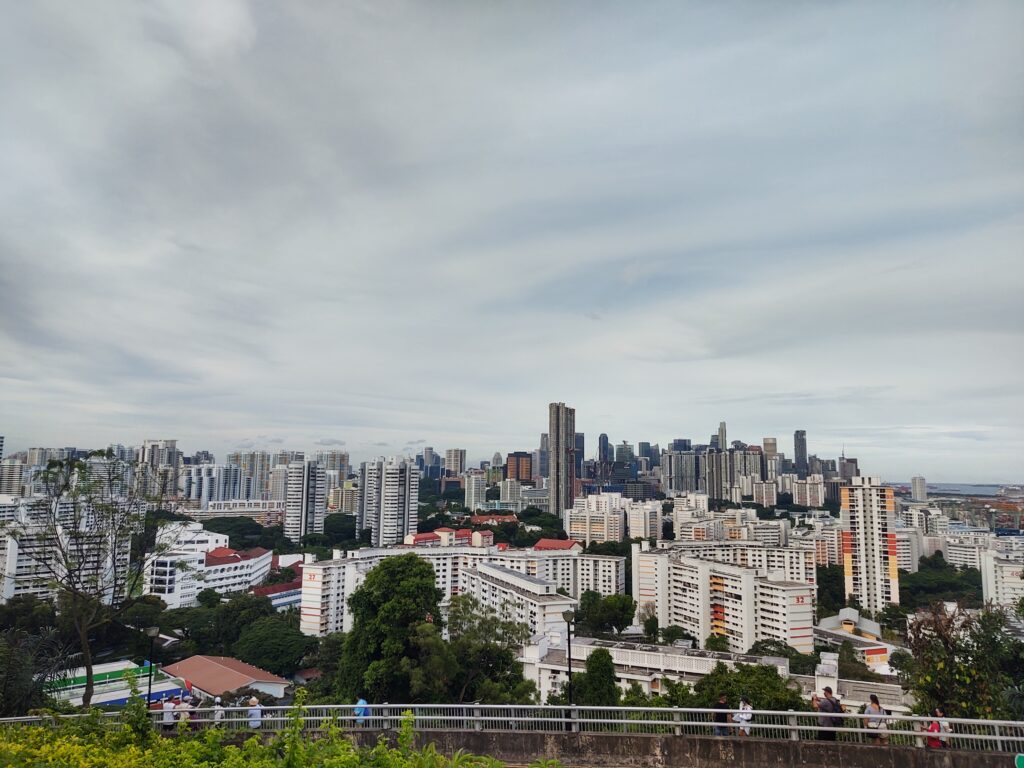
Jewel at Changi Airport
Last, but certainly not least, check out Jewel at Singapore’s Changi Airport. There’s a huge greenhouse with water features and lights shows, along with restaurants and shopping areas, and it’s given Changi a reputation as one of the most beautiful, enjoyable airports in the world. It’s on the Singapore-side of immigration, so if you plan on stopping by when leaving the country, make sure you save some time to visit before going through security and heading to your gate. There’s also a butterfly garden in Terminal 3, if you have some downtime once you’re through security.
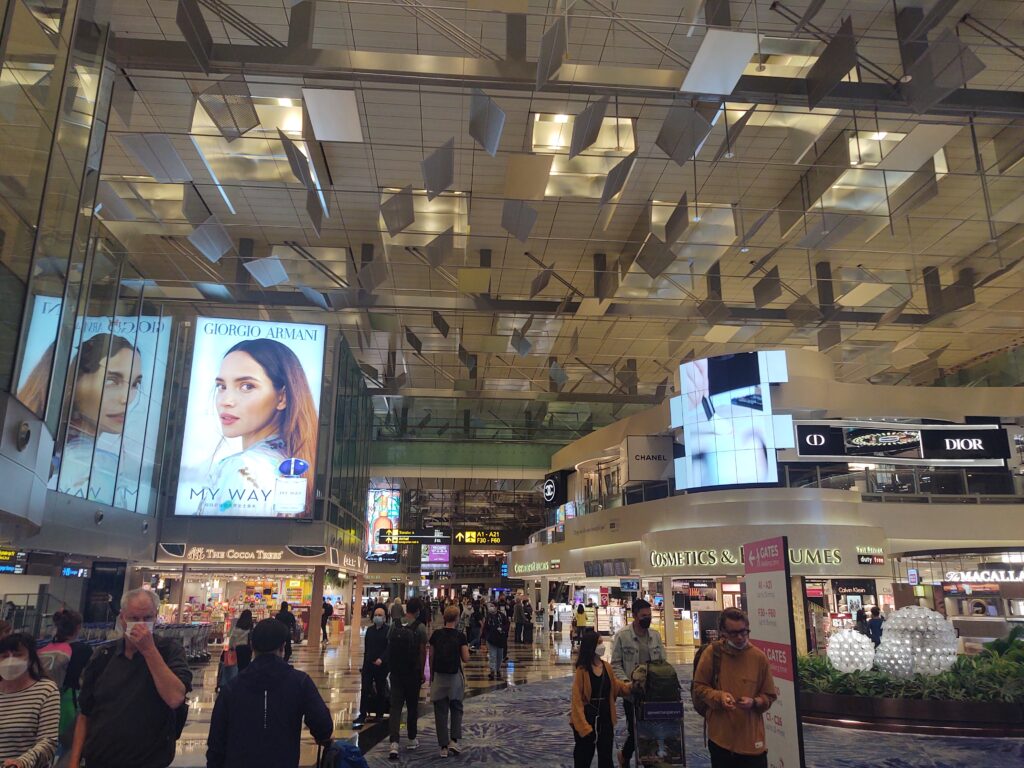
Singapore’s Fusion Of Flavors
I saved the best for last: Singapore’s food.
The country is a five-star food destination with a huge breadth and depth of different cuisines and fusions. From busy hawker food courts to upscale restaurants and fine dining, everywhere you eat in Singapore is bound to be delicious.
Singapore’s food court dining scene is one of its most famous staples. There are food courts everywhere, in shopping malls and standalone complexes, and they’re packed with any and all varieties of inexpensive food. Crowded at almost all times of day, you’re sure to see giant piles of mouthwatering dishes that seem to stare back at you from behind the glass, along with plenty of food made-to-order.
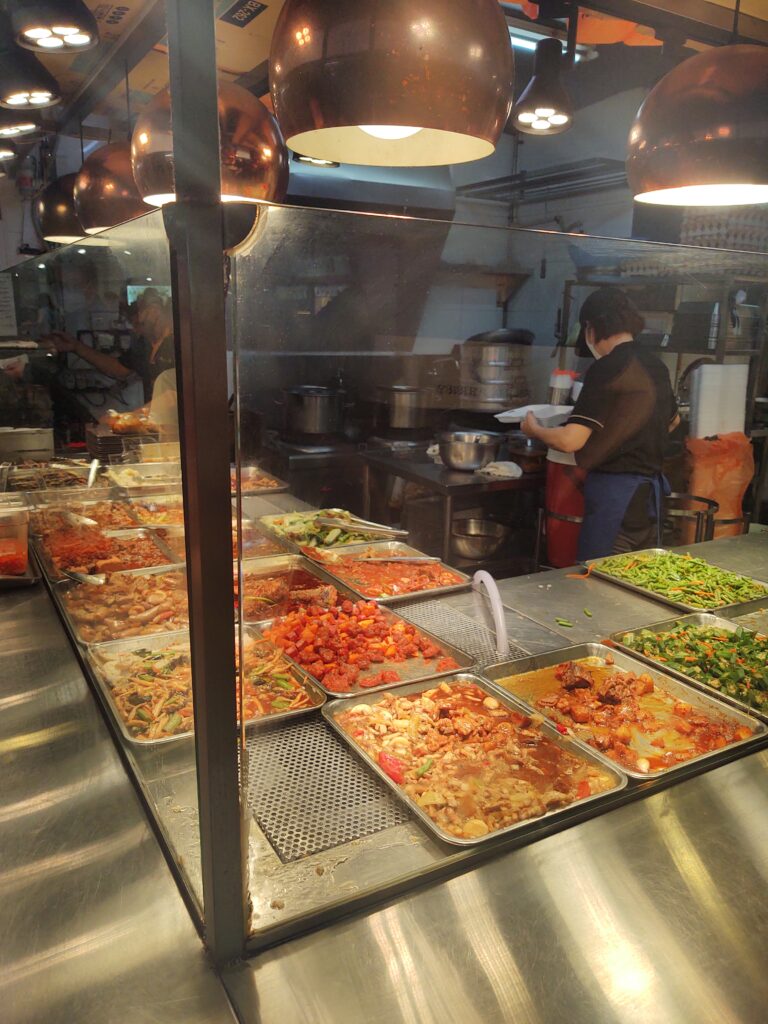
I enjoyed a variety of dishes on my visit. Immediately after I arrived, my host took me out for bak kut teh, which is a salty, peppery soup containing tender boiled pork ribs. We also chowed into some surprisingly tasty pork intestines with a black soy-based sauce. Later, I enjoyed popiah — like an egg roll but with a soft, sweet skin and fried vegetables inside — and putu piring, which is a soft coconut cake covered in a snow of coconut flakes and powdered sugar, for dessert.
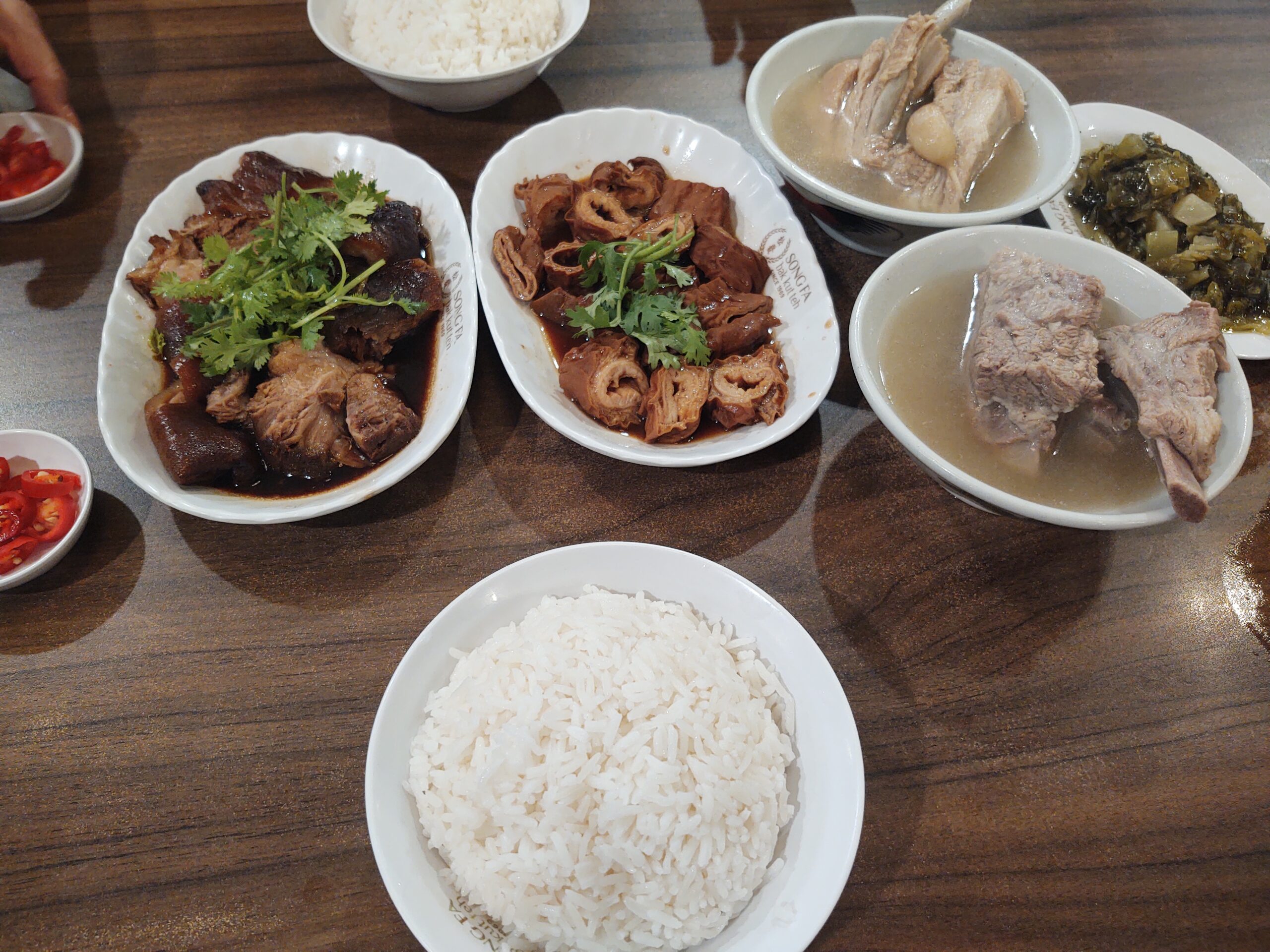
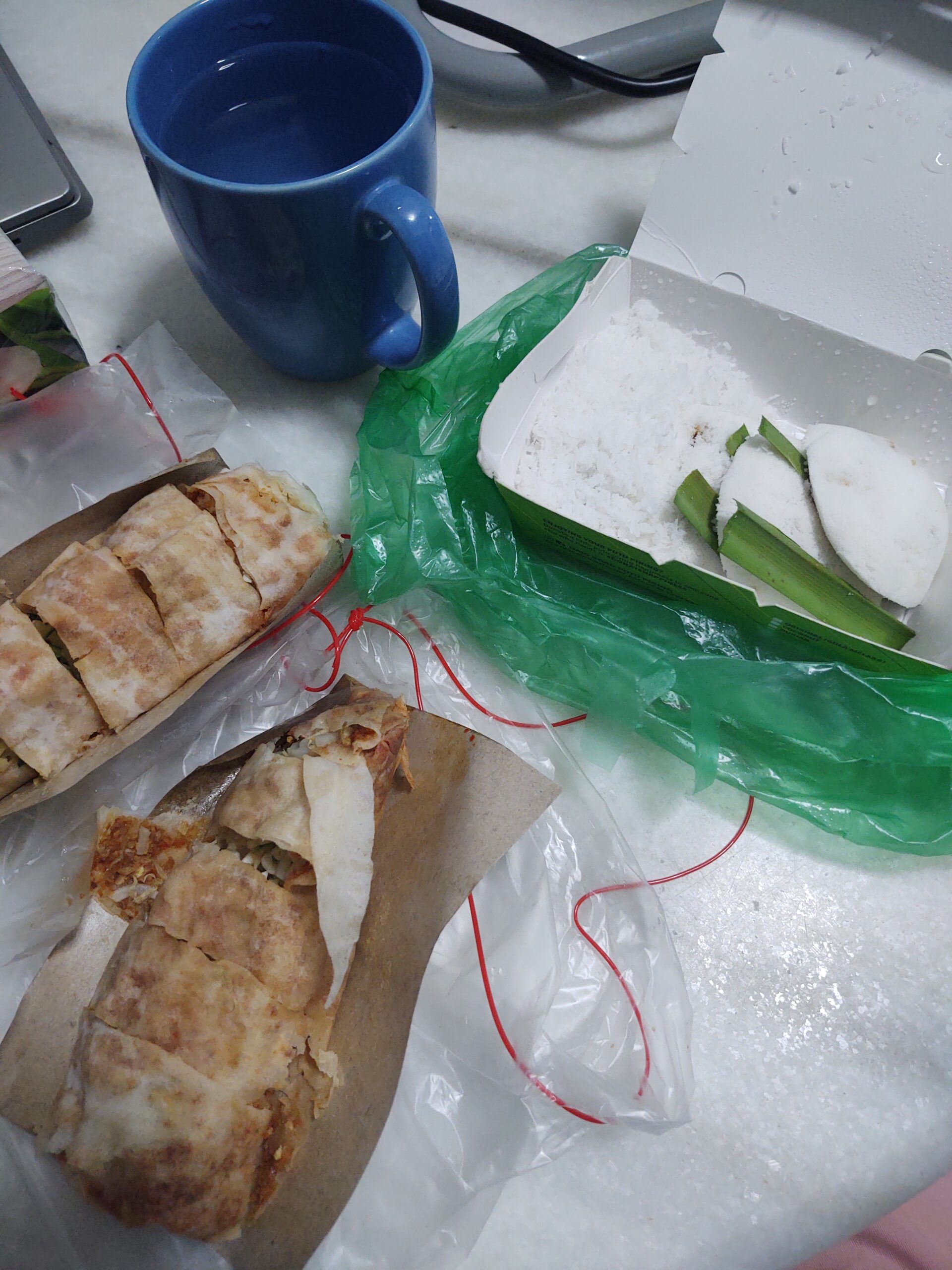
Whenever someone asks “what do you like to eat?” I always answer with “whatever’s good!” In response to this, my new friend KC took me to some of his favorite places, all of which were superb. For lunch, we enjoyed soup dumplings (xiao long bao) — a favorite of mine, but heartbreakingly hard to find in the U.S. — with fried rice with pork and stuffed peppers. Later, we stopped for a Cantonese dessert, featuring different soupy sweet dishes with sesame paste, red bean, and glutinous rice. Then for dinner, I had a tasty chicken curry mixed plate in Little India while he munched on a chicken curry dosa.
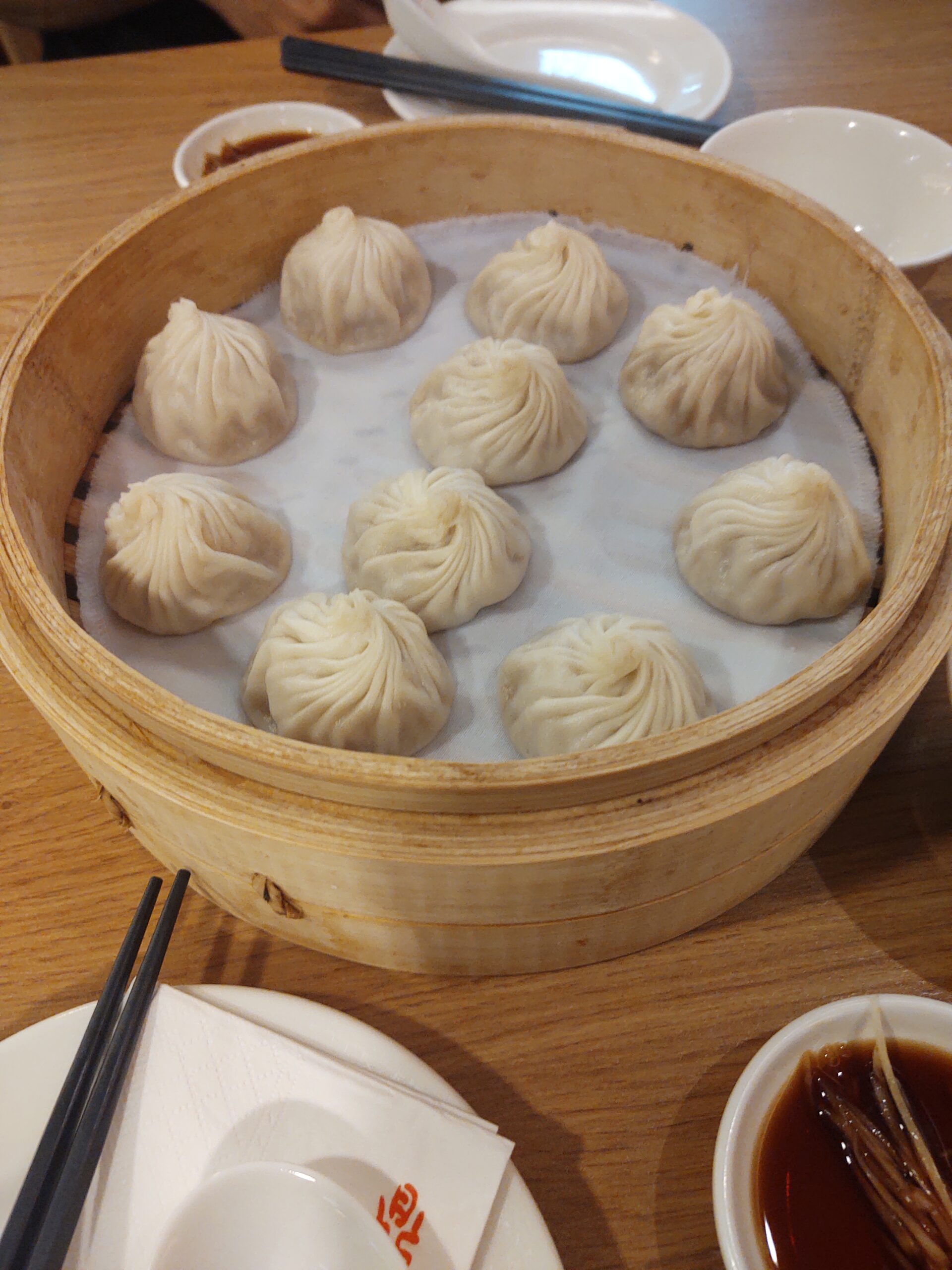
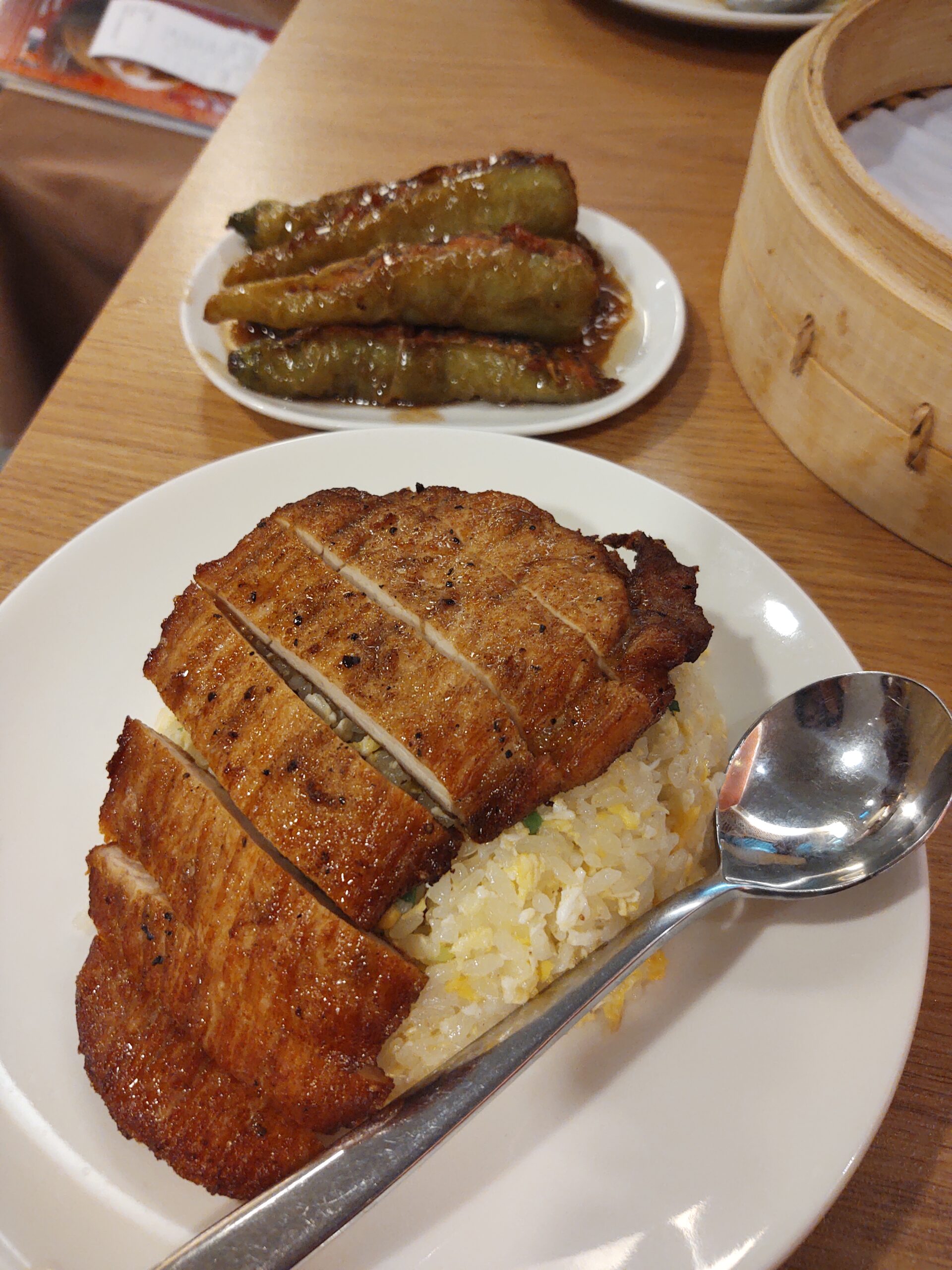
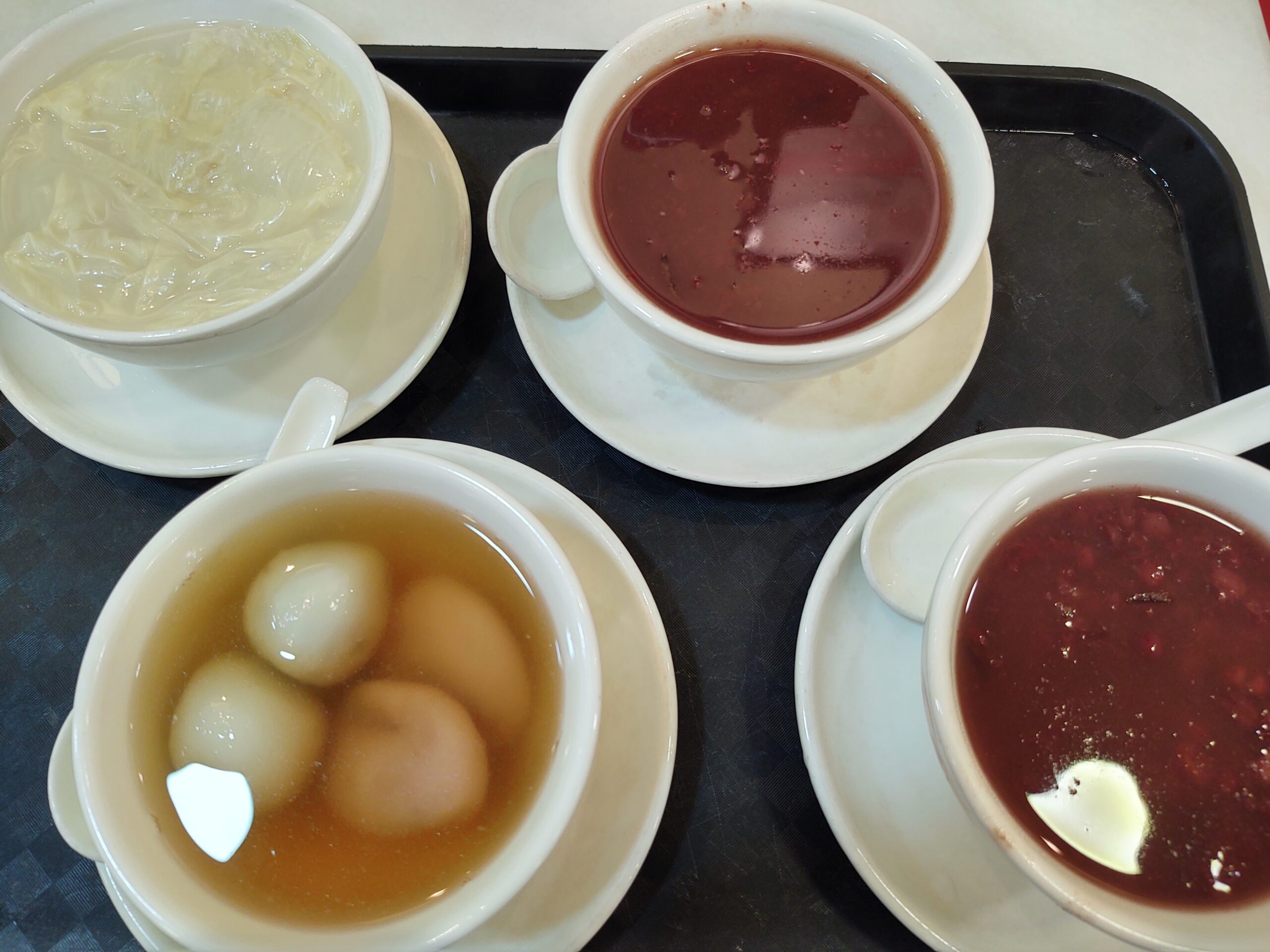
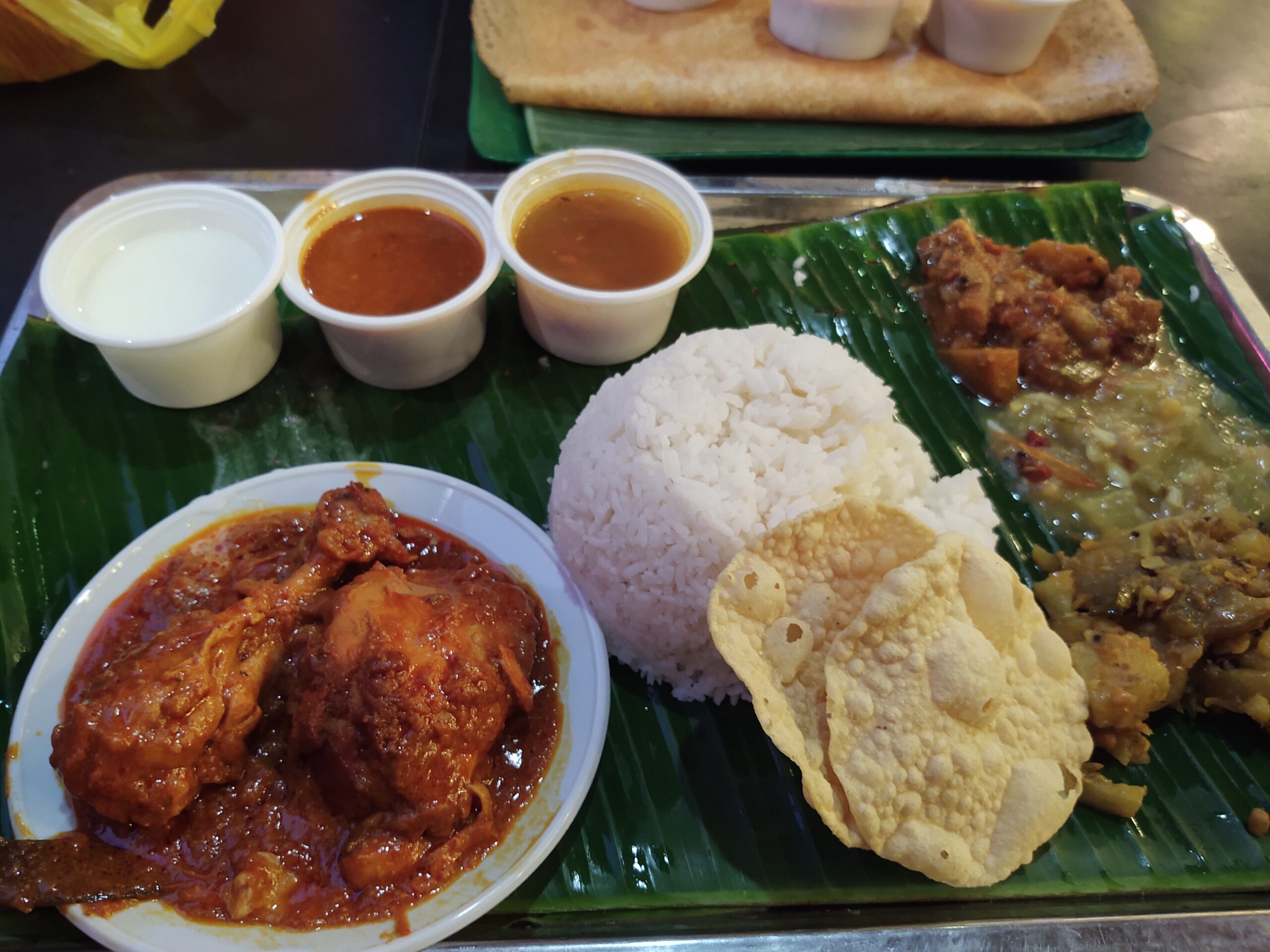
The next day, I had some fantastic curry laksa for breakfast and some excellent ramen for lunch. (I know ramen is Japanese, but the quality of this particular ramen I had is a testament to Singapore’s international cuisines. I didn’t try Italian or Mexican food during my visit, but I’m sure these are great too.)
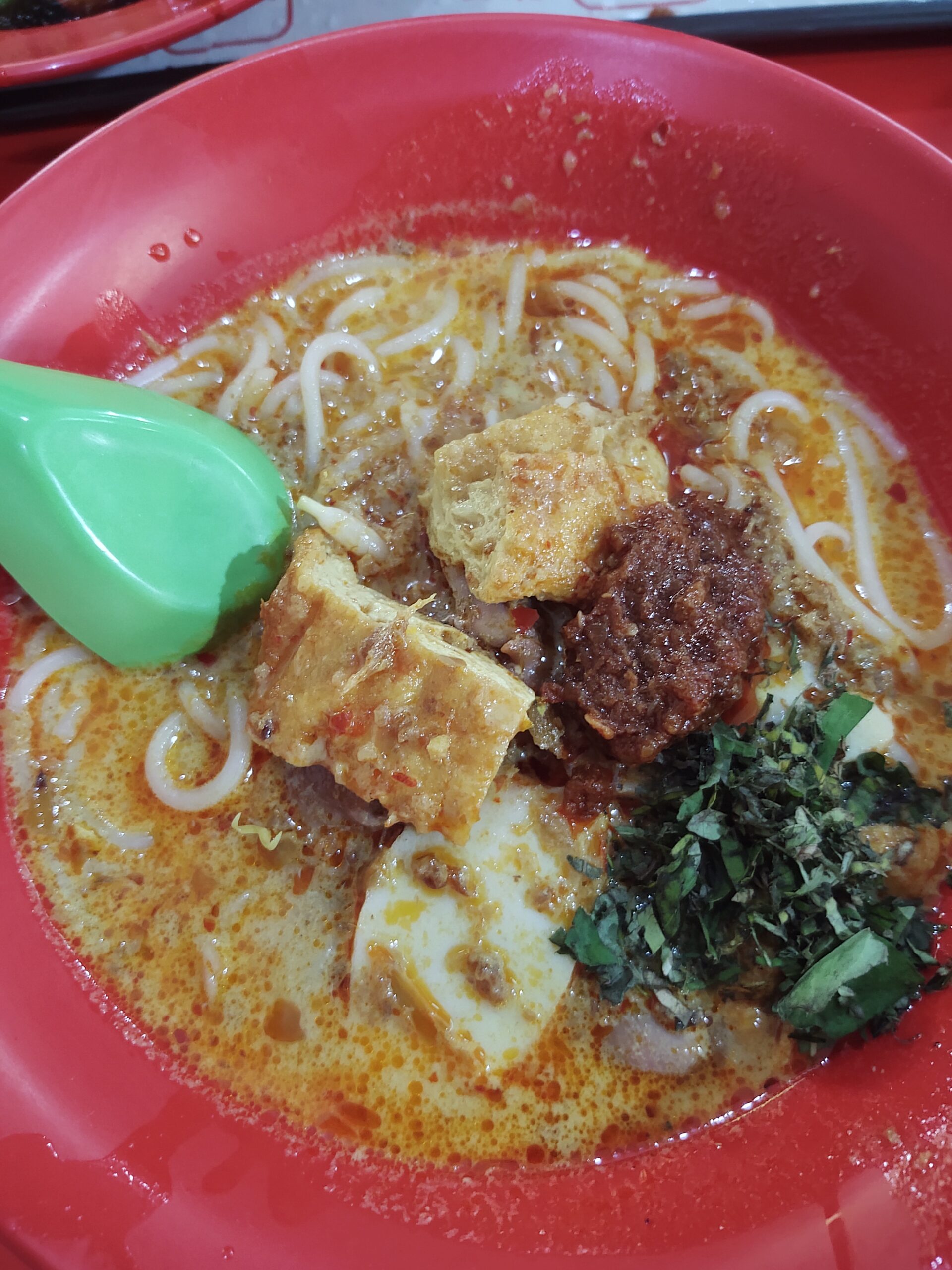
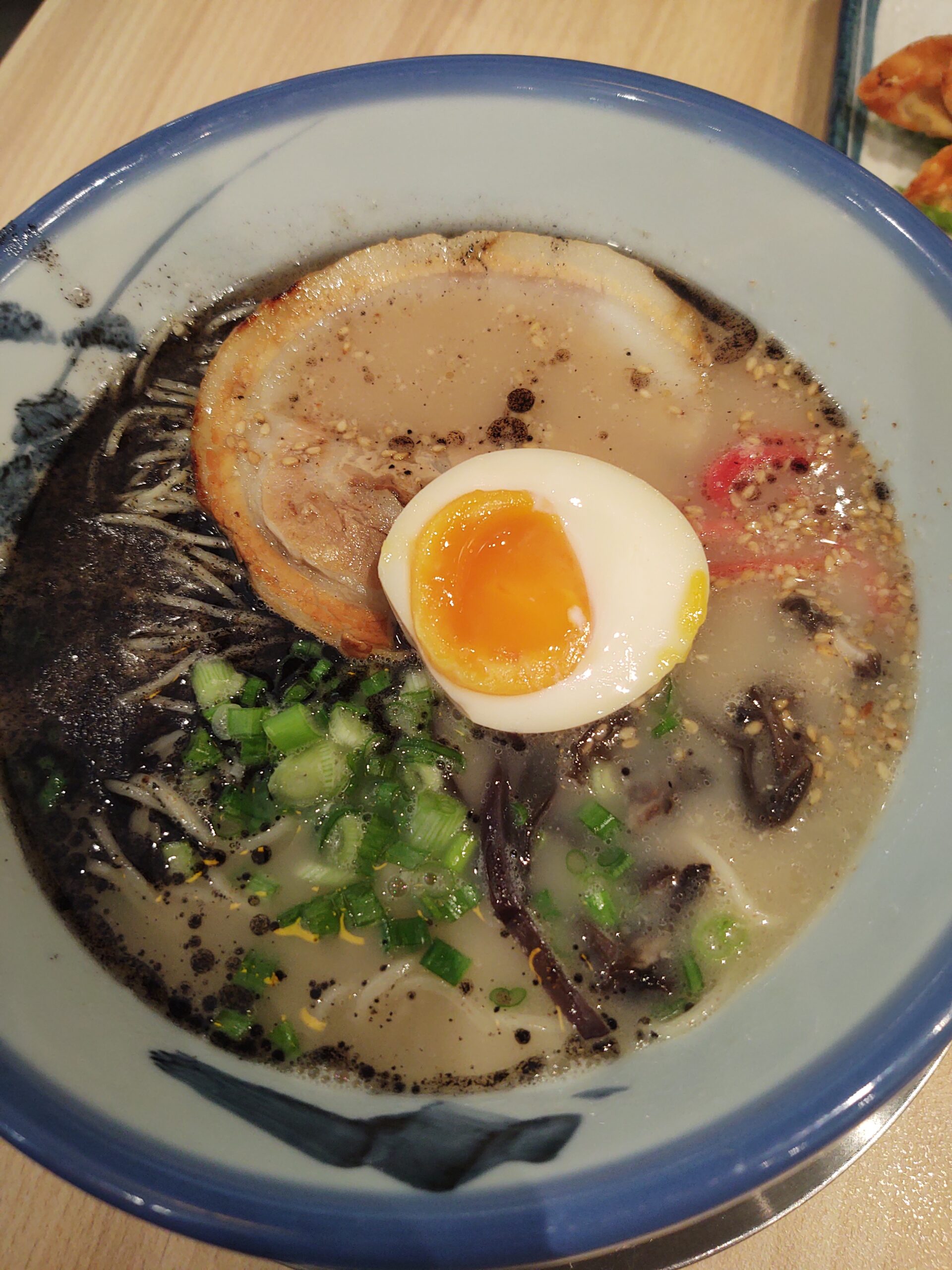
To cap it all off, KC and I had a spectacular Cantonese fine-dining feast for dinner where we sampled preserved eggs, a beef stir fry dish, an appetizer with soft and savory stewed nuts, roast duck, shrimp with salted eggs, and a mango custard dessert. It was one of the best, most special meals I’ve ever had.
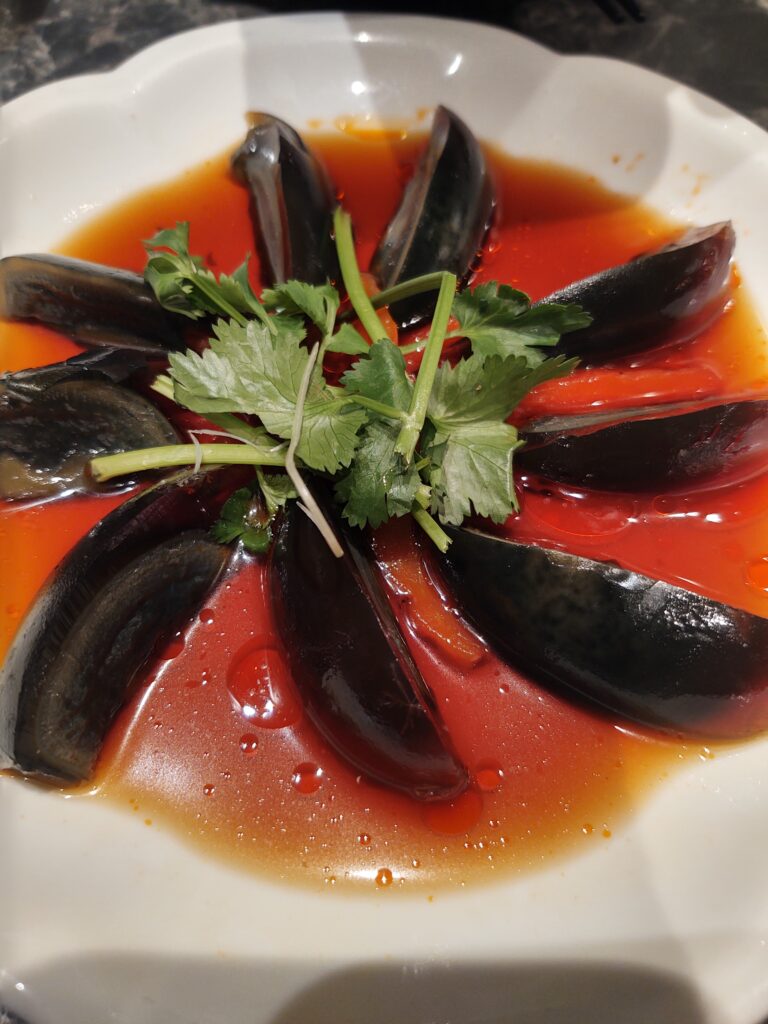
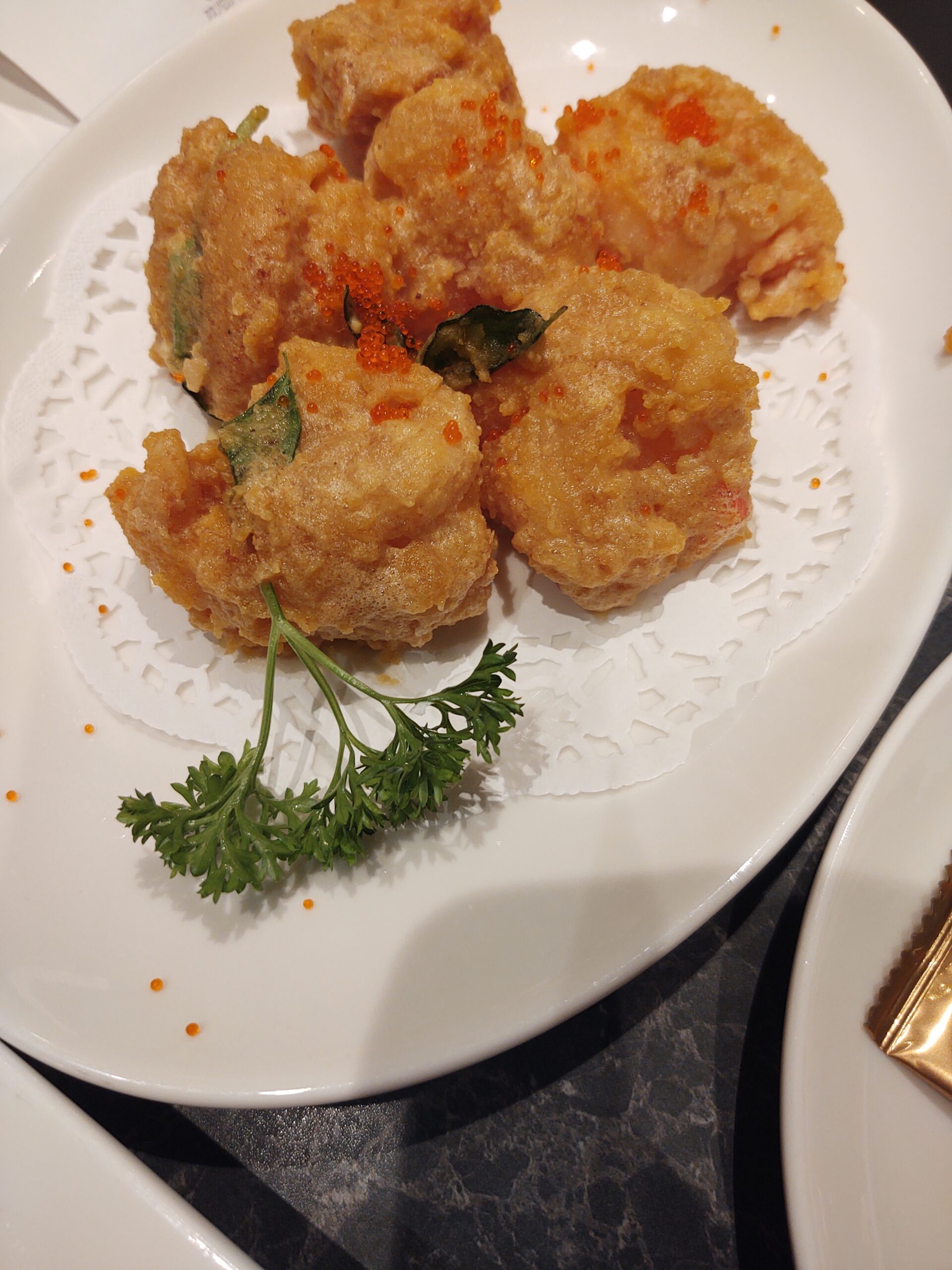
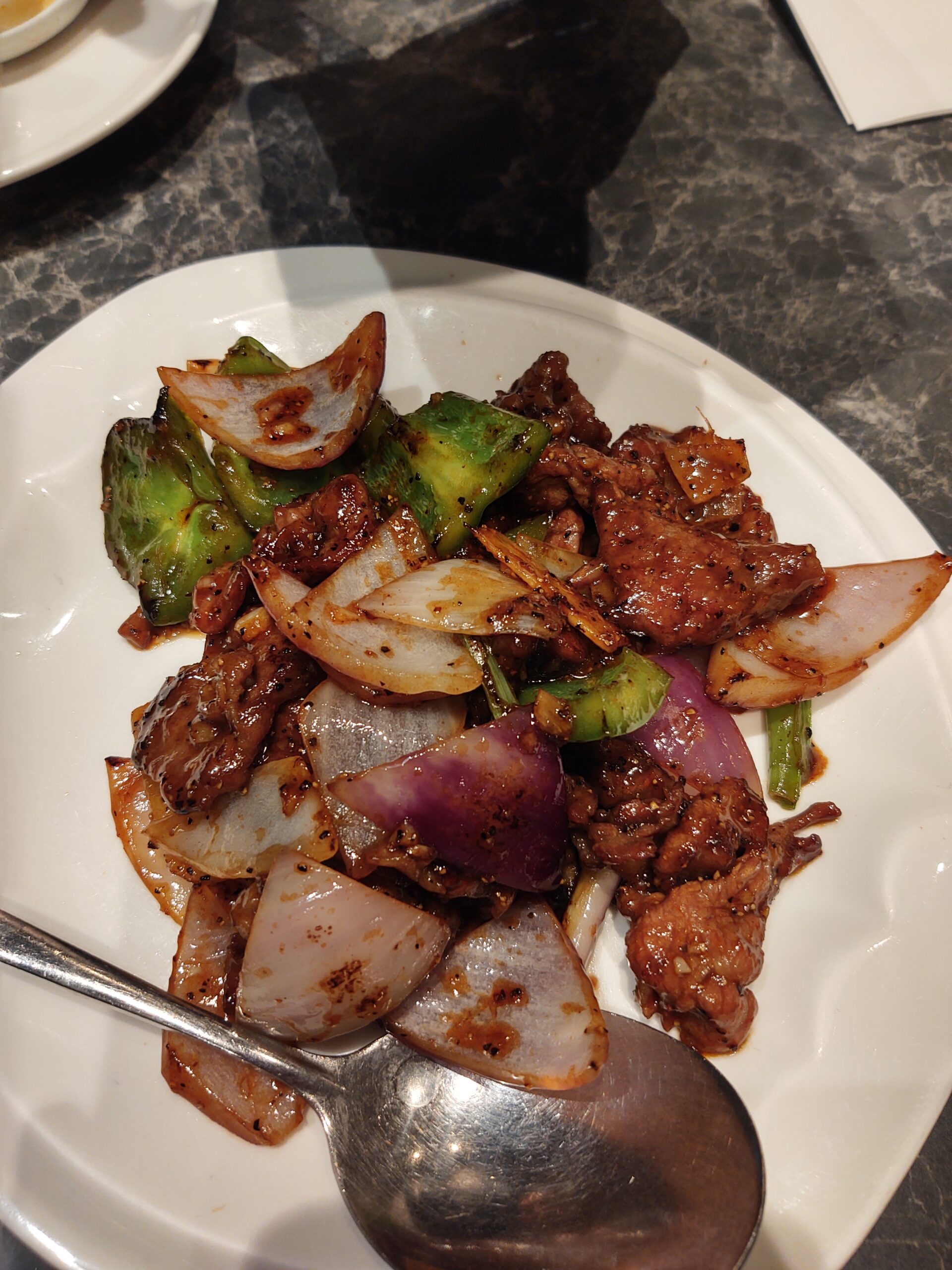
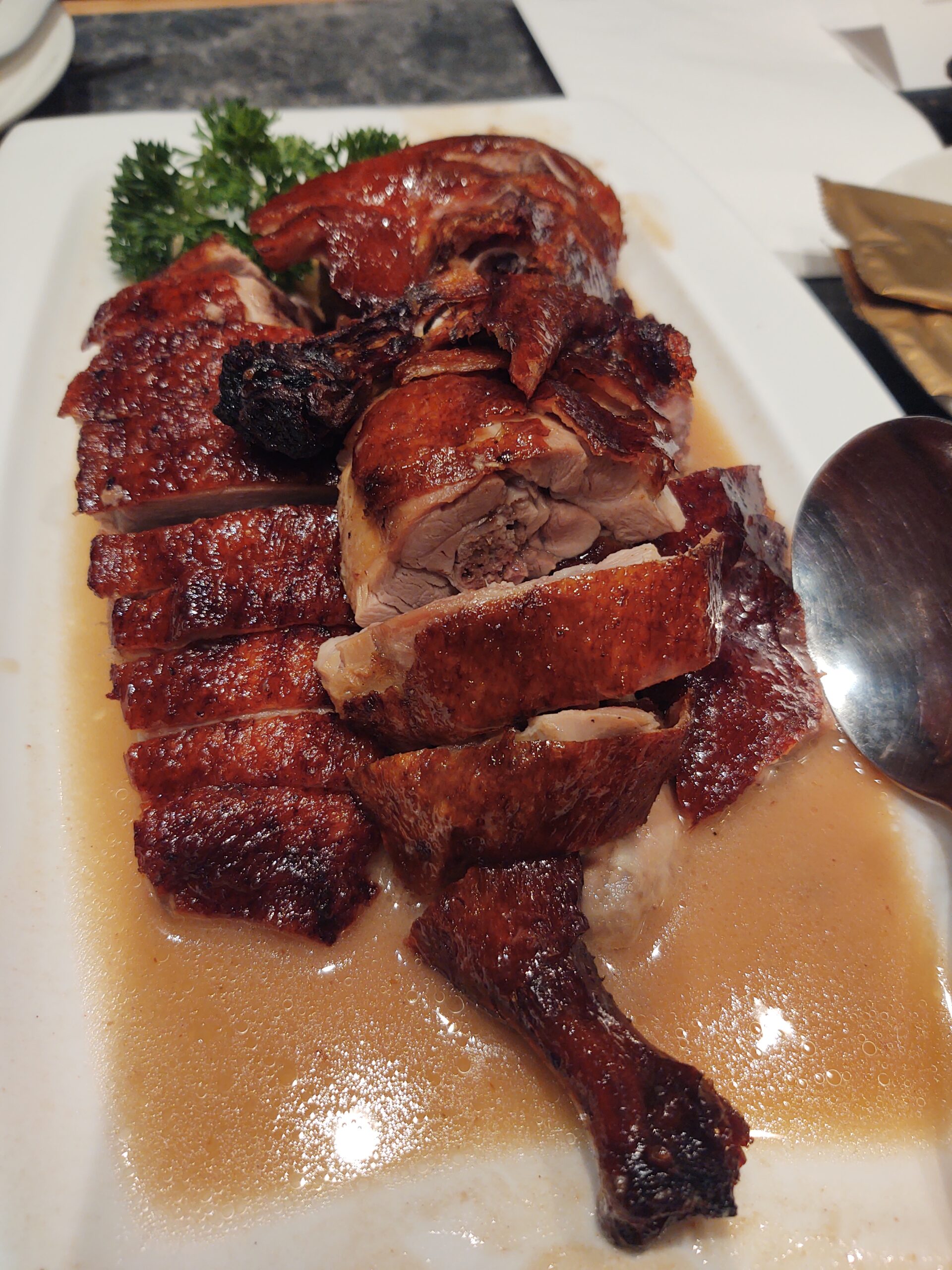
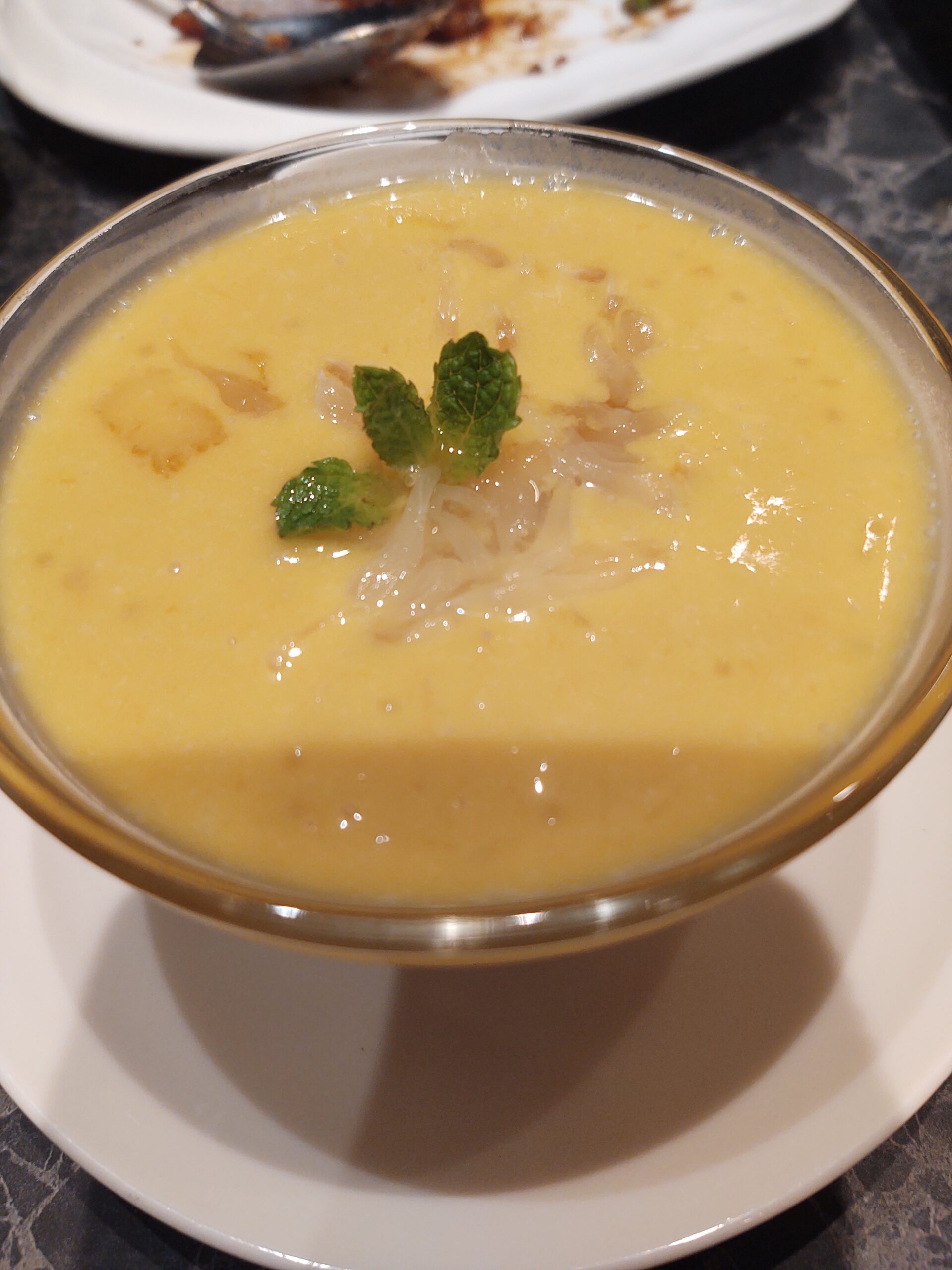
I sampled a few more dishes on my own, including carrot cake. Don’t be fooled by the name: in Singapore, this is more like a carrot-flavored omelet than the sweet dessert we know and love in the west. There are two varieties; I preferred the crunchy, savory white carrot cake over the softer, saltier black carrot cake. I also had some more South Indian/Malay fusion food — nasi goreng with roti prata — a fried, spicy rice dish served with a chewy flatbread.
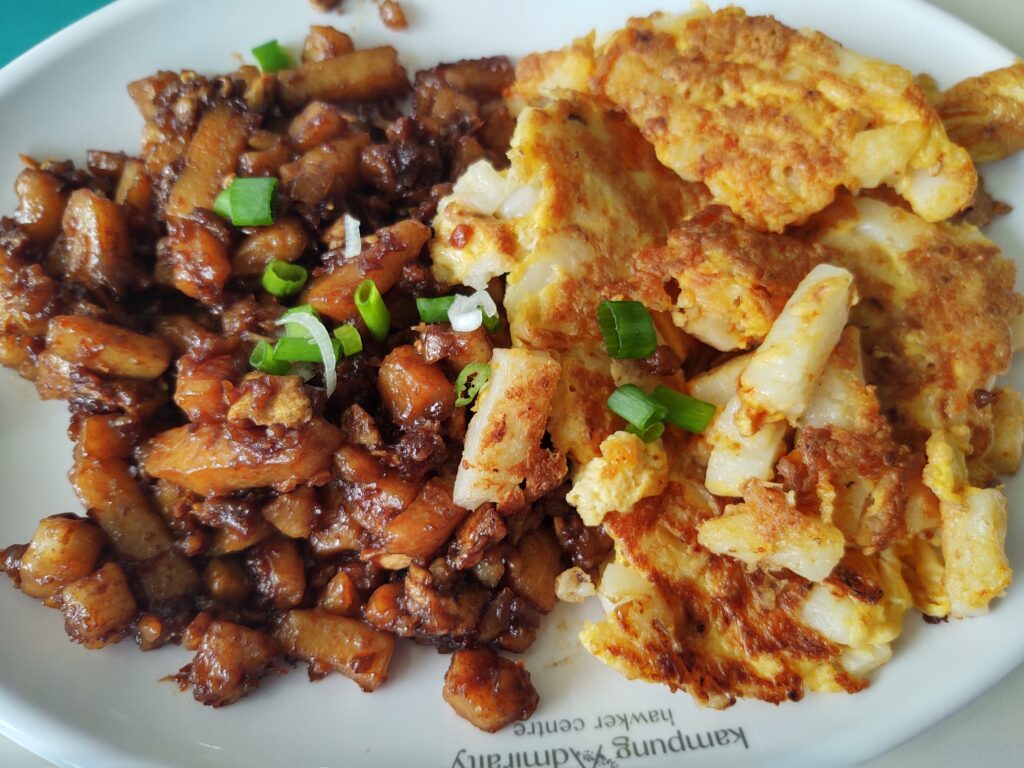
Personally, I am a bit obsessed with coffee and tea, and I was delighted by the teh tarik and kopi that they serve in Singapore. Both of these sweet milk tea and coffee (respectively) drinks come from Malaysia, just across the bridge on the north side of Singapore. A Muslim country with a history intertwined with the coffee-loving Arab world, it’s no surprise that Malaysians drink such delicious hot beverages. More about Malaysia in the next post. 😉
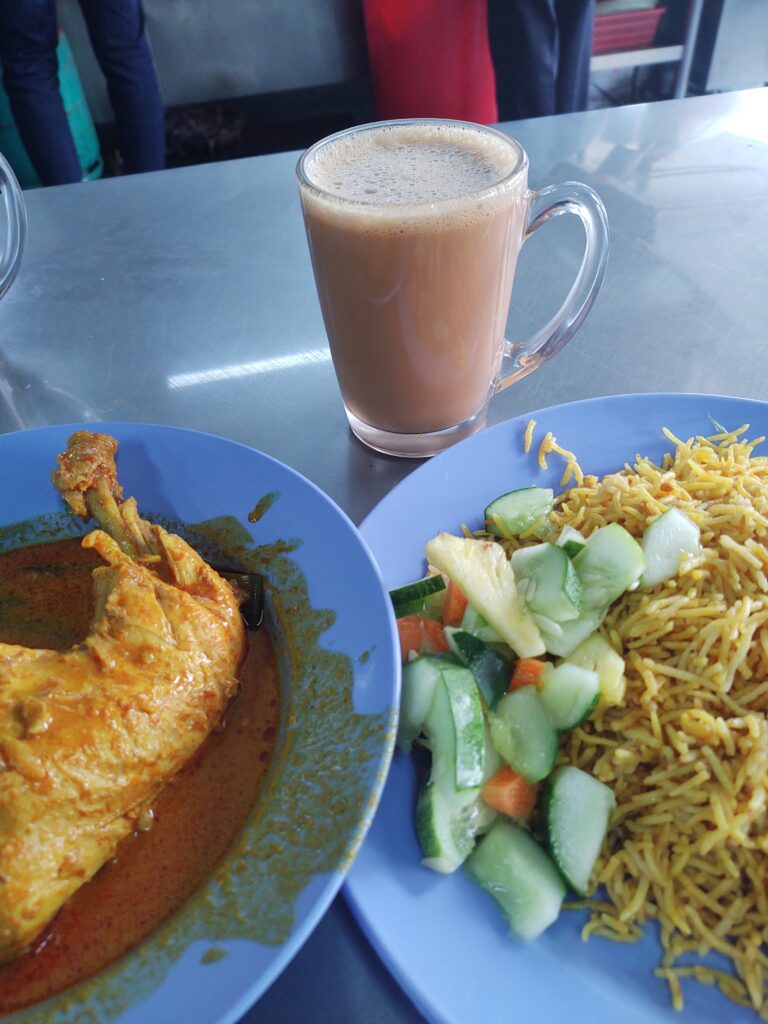
Needless to say, they eat very well in Singapore. I can’t tell you how many times I thought of my girlfriend, who is a huge foodie (like everyone in this part of the world, it seems), thinking “Oh man, this is so good — Cream would love this.” You could spend weeks in Singapore and still not try all the different varieties of food. I asked a few people their favorite foods and dishes, to which everyone consistently replied, “There are too many.”
Five Days In Singapore, Southeast Asia’s City-State Utopia
Besides the excellent and unique food and attractions, I found Singapore’s people were friendly, welcoming, and helpful. My new friends are very proud of their country and were incredibly excited to share it with me. I think there is a healthy collective mindset here that Singapore is not just for one individual, but for everyone to enjoy. With so many cultures and immigrants intermingling and a strong government that punishes all forms of insolence (for better or worse), the people are tolerant and respectful. As a whole, they seem to mind their own business but are happy to connect if you break the ice.
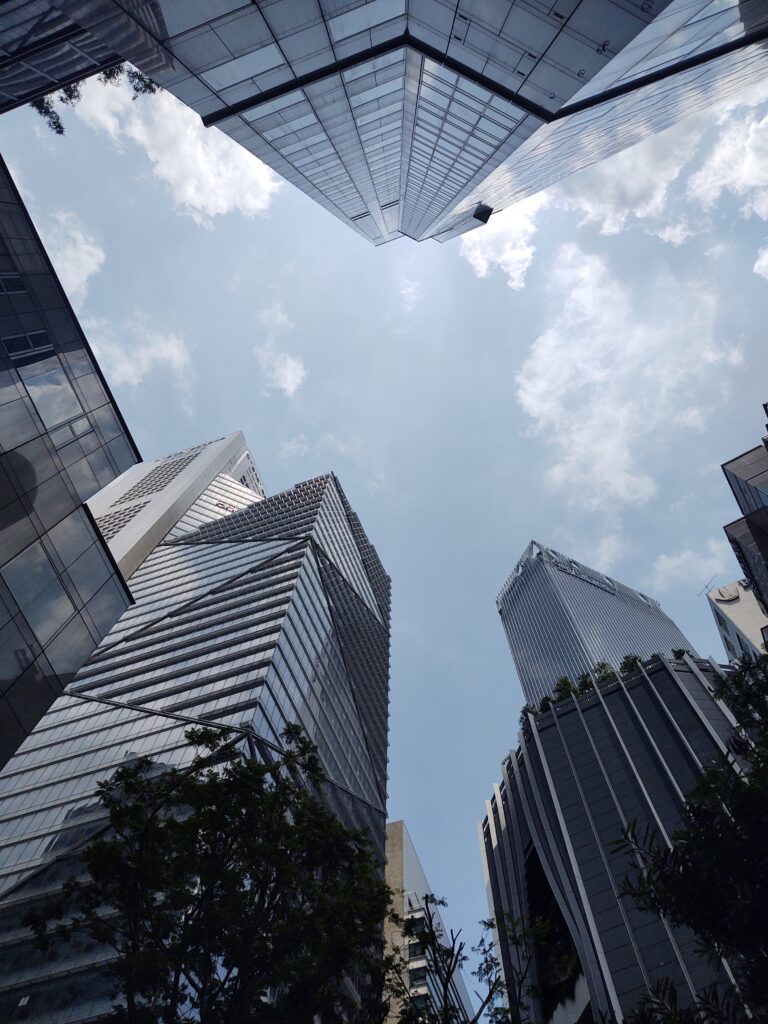
As a highly developed, modern country, Singapore is a comfortable and convenient place that all travelers can enjoy, except perhaps those on the tightest of budgets. It’s a mini world of luxury that is not so different from the West. In that sense, it won’t push you out of your comfort zone, but it is incredibly comfortable. I highly recommend visiting at some point if you haven’t already! I’m certain that you’ll love it.
From here, I’m flying to Malaysia, where I’ll spend another week before heading home to Thailand.
Cheers,
Andrew
P.S. You can subscribe to the email list to get notified about new posts and photos by filling out the form at the bottom of every page on the site, including this one.
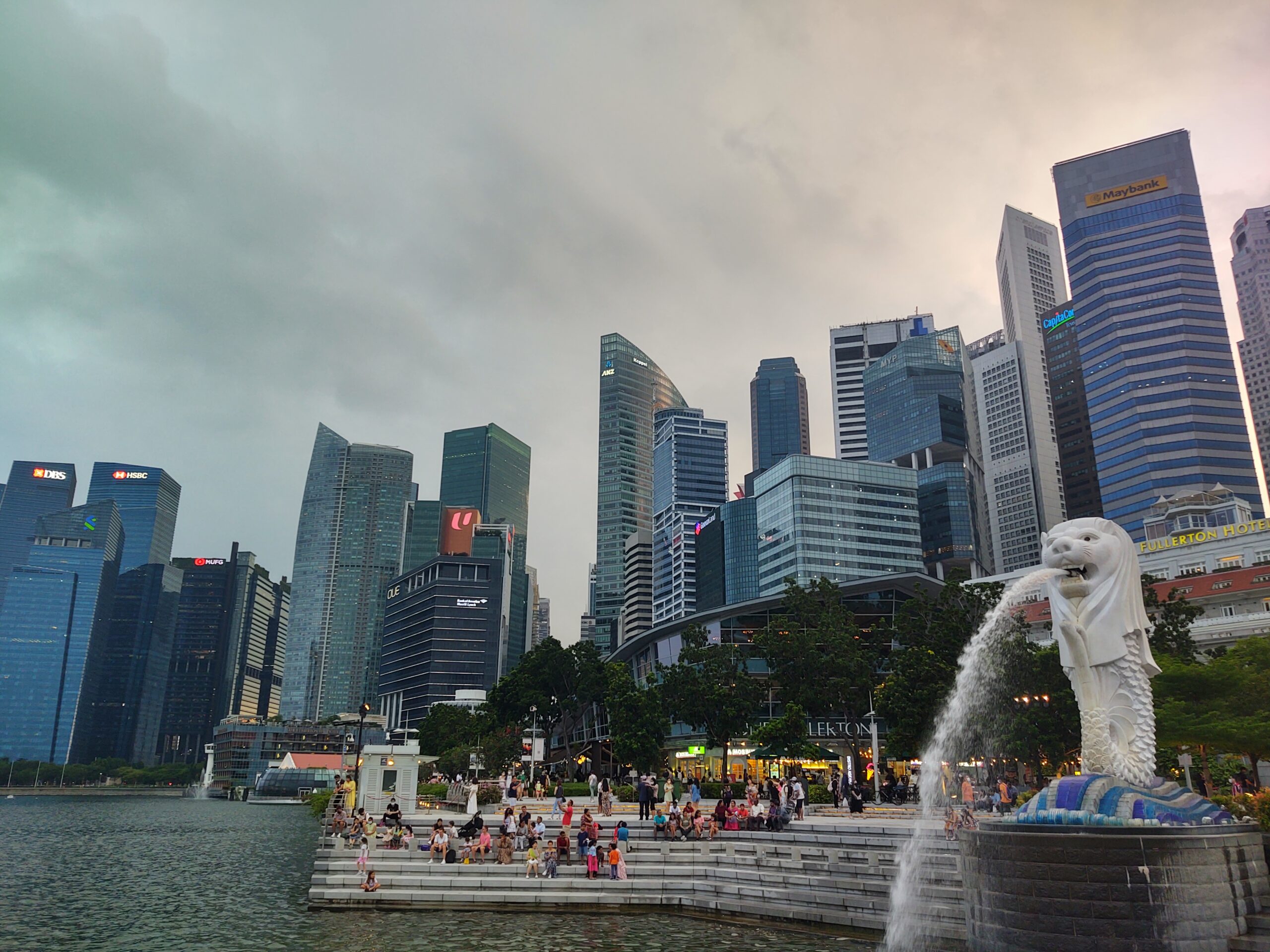
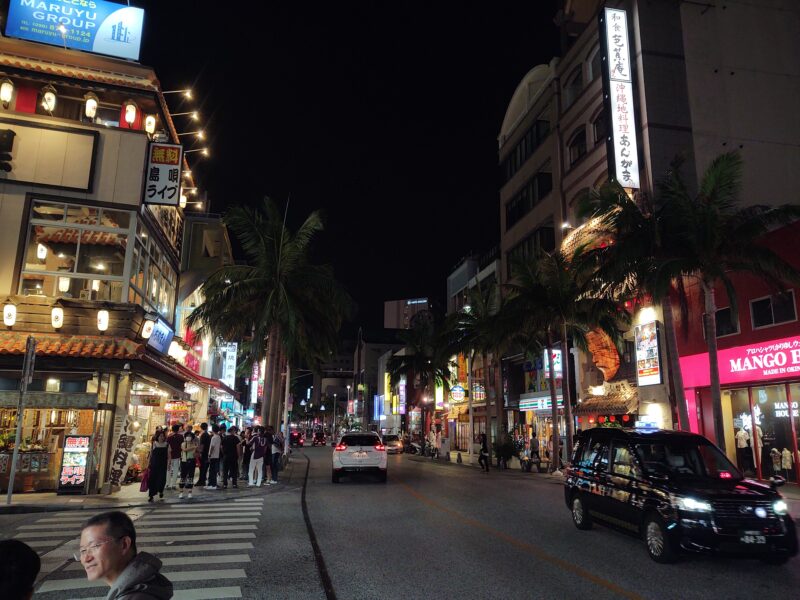
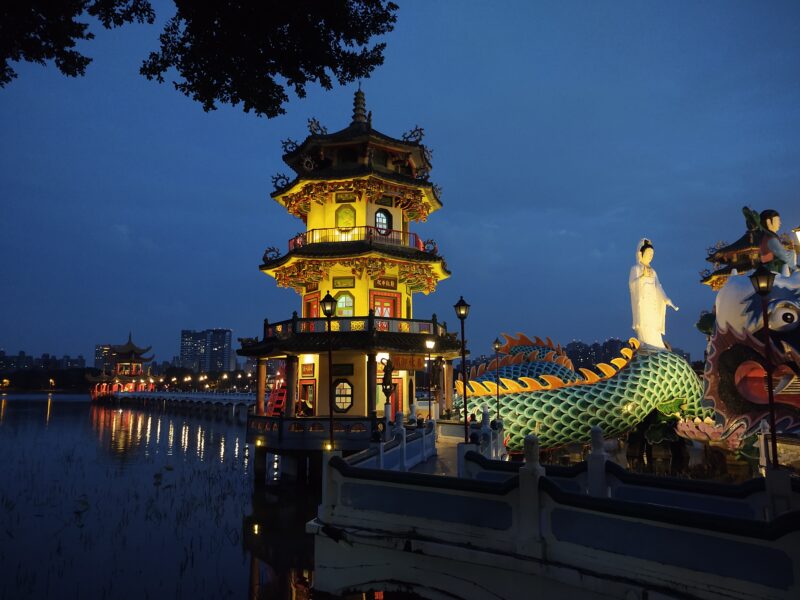
One thought on “A 5-Day Taste Of Singapore”